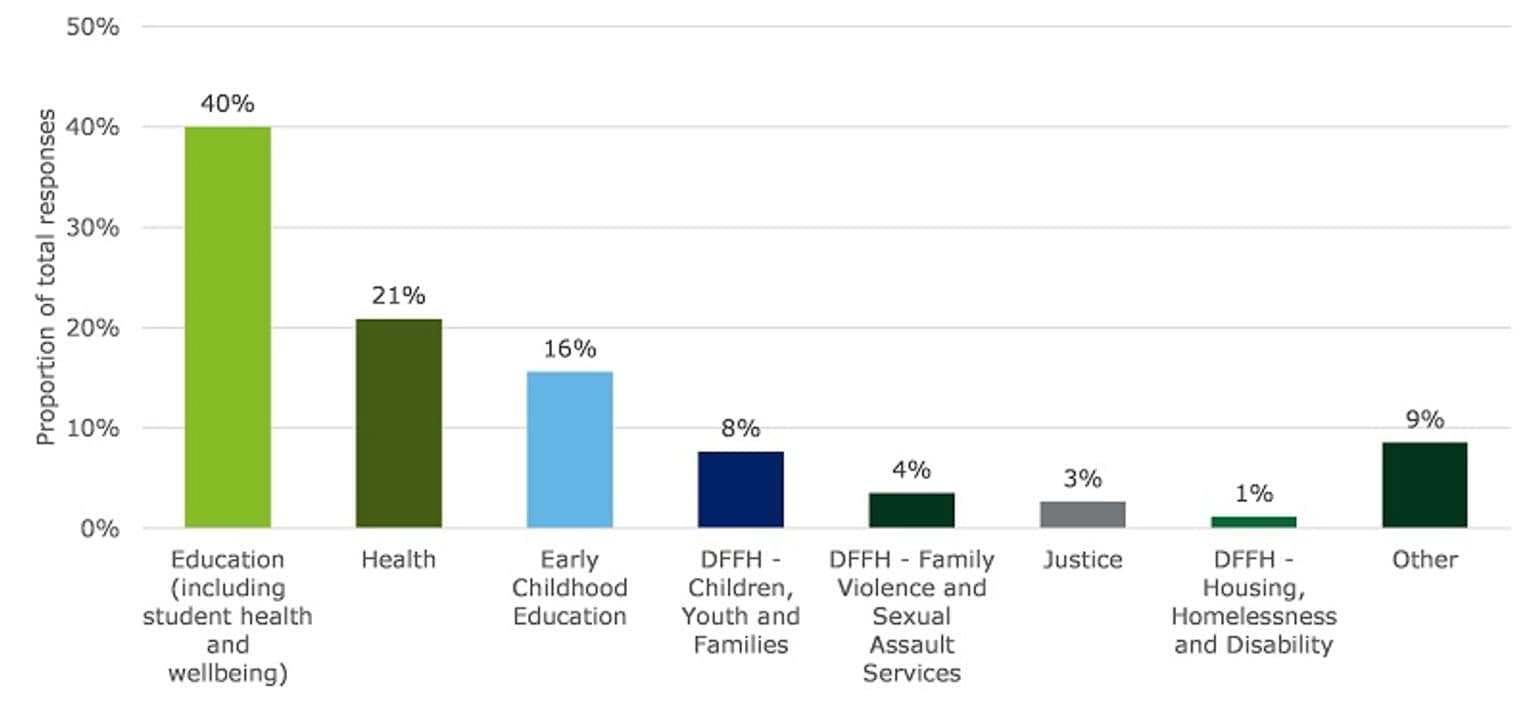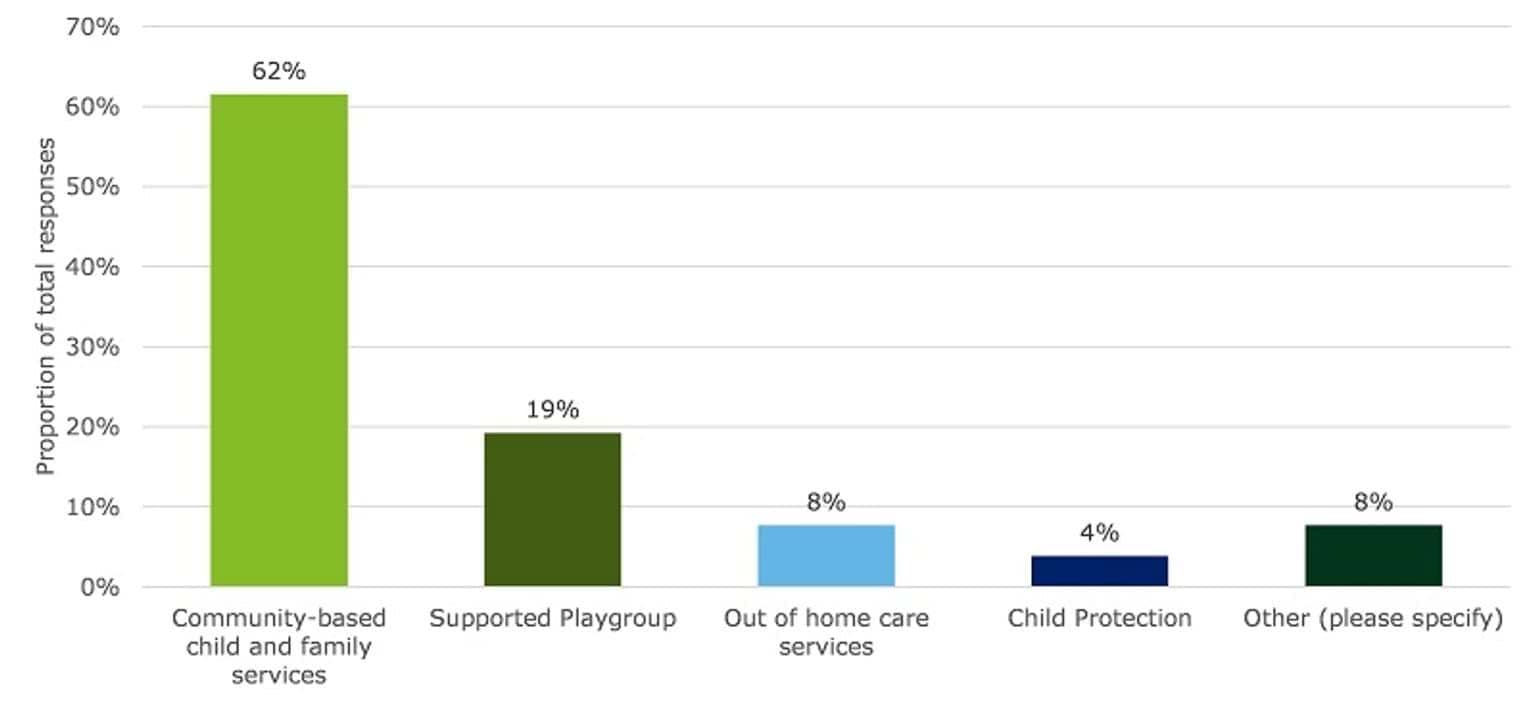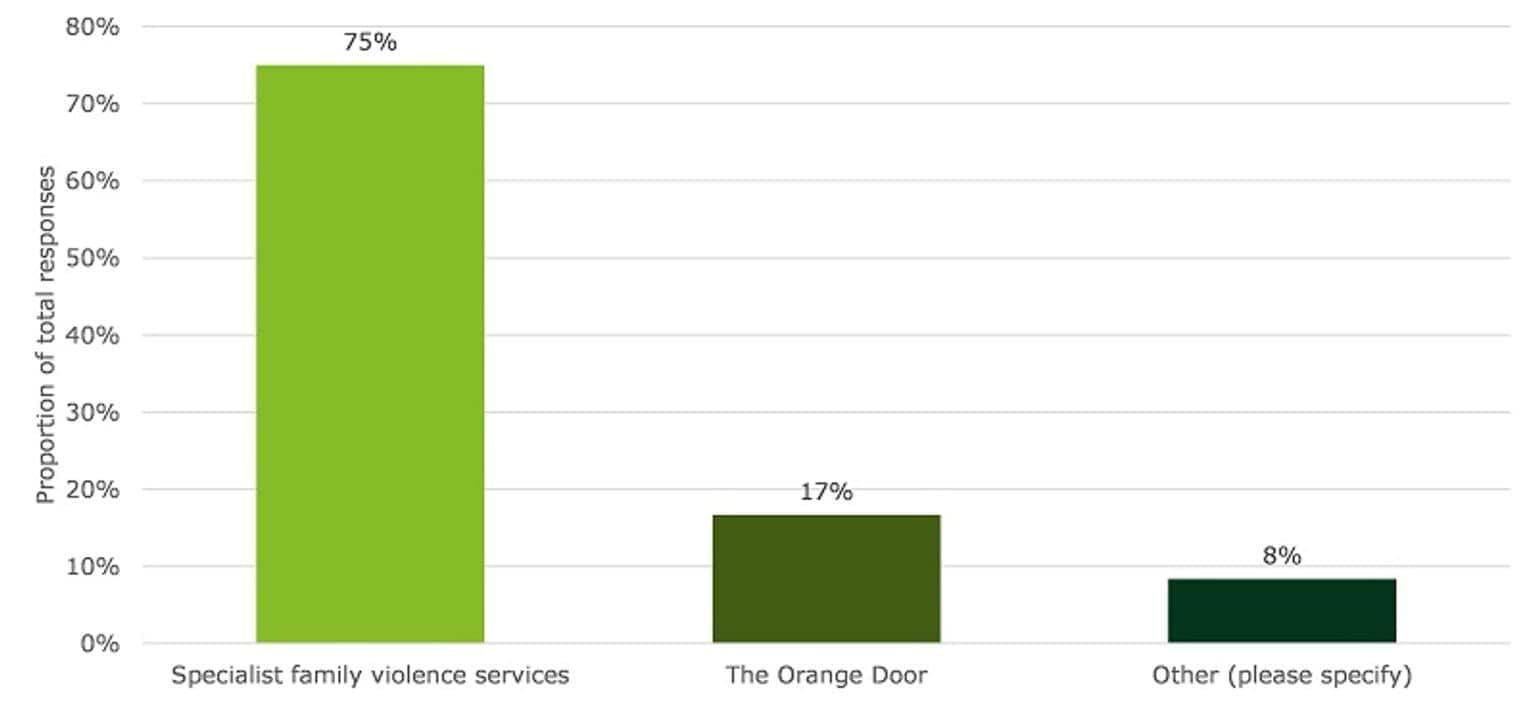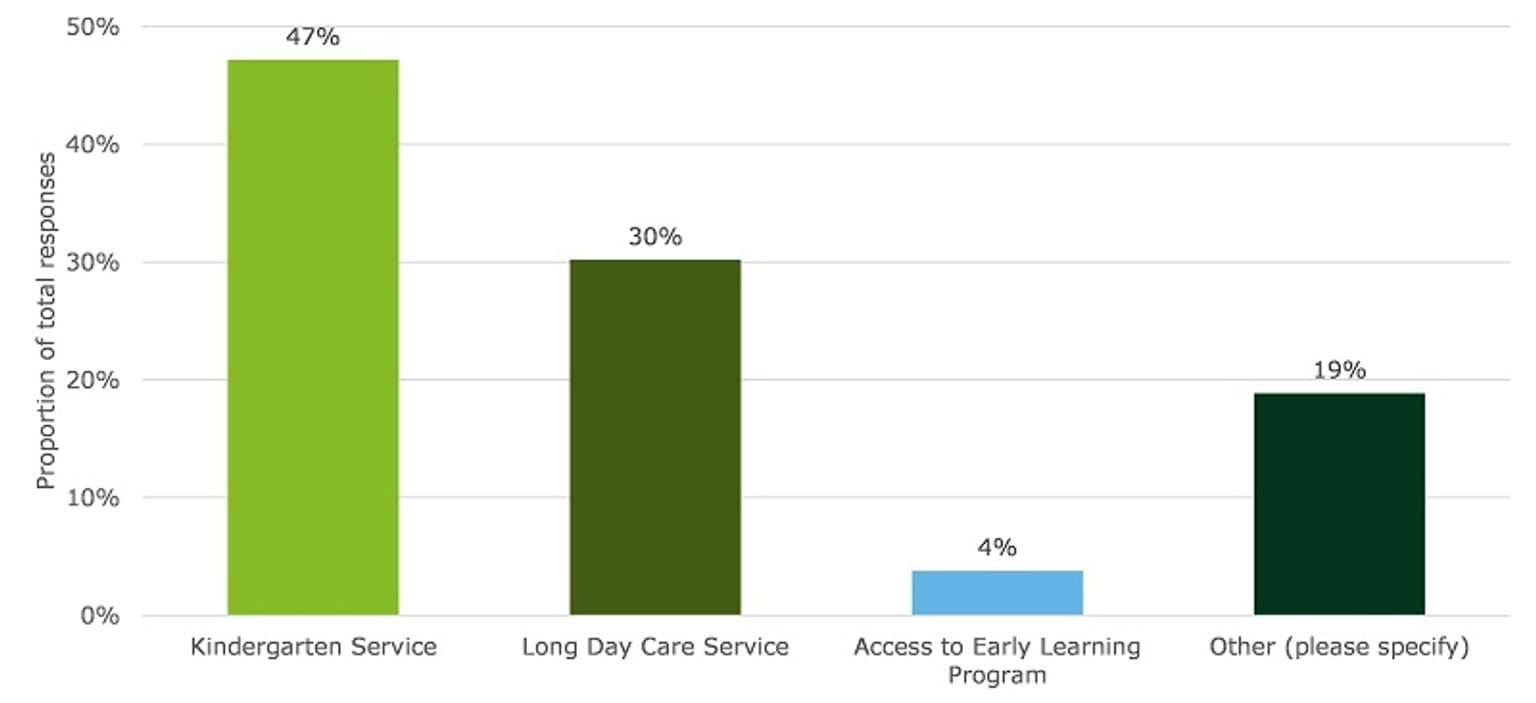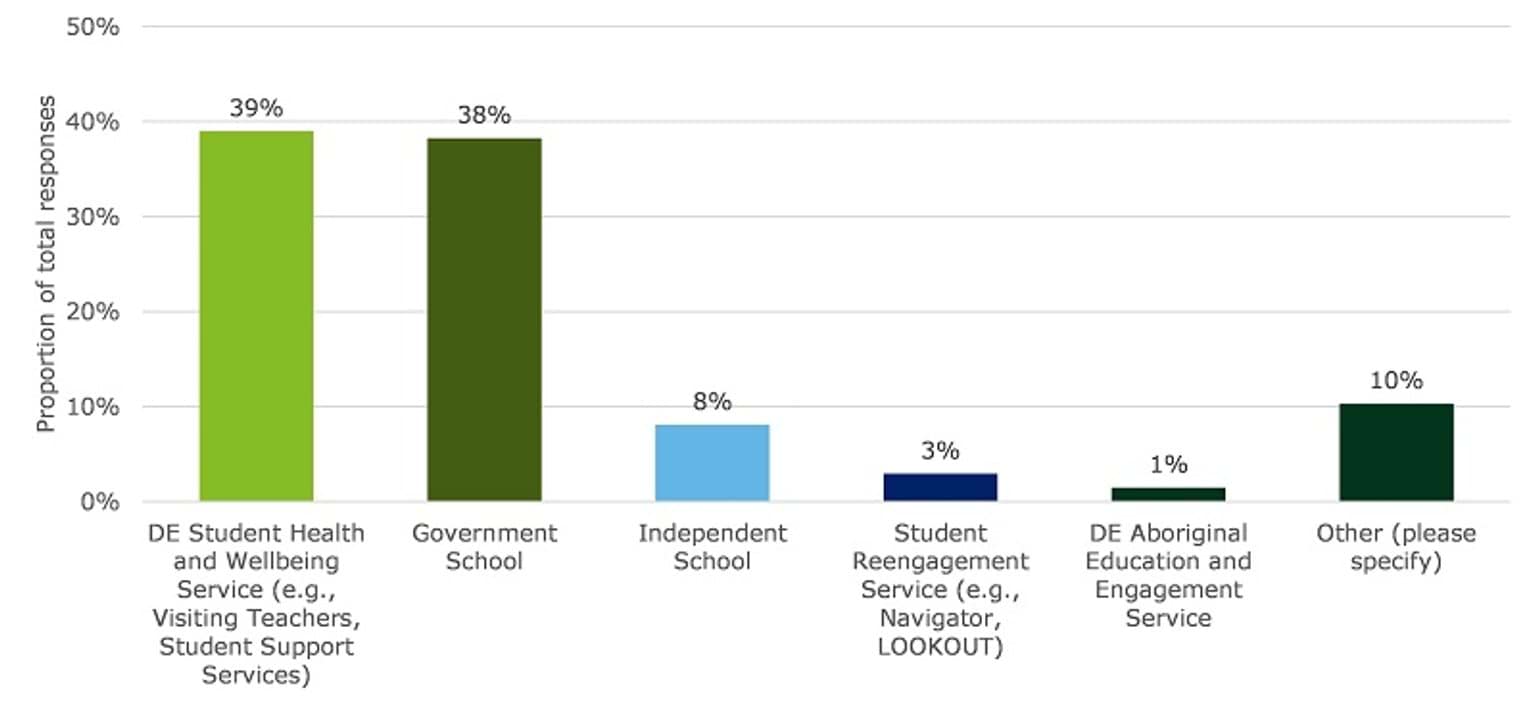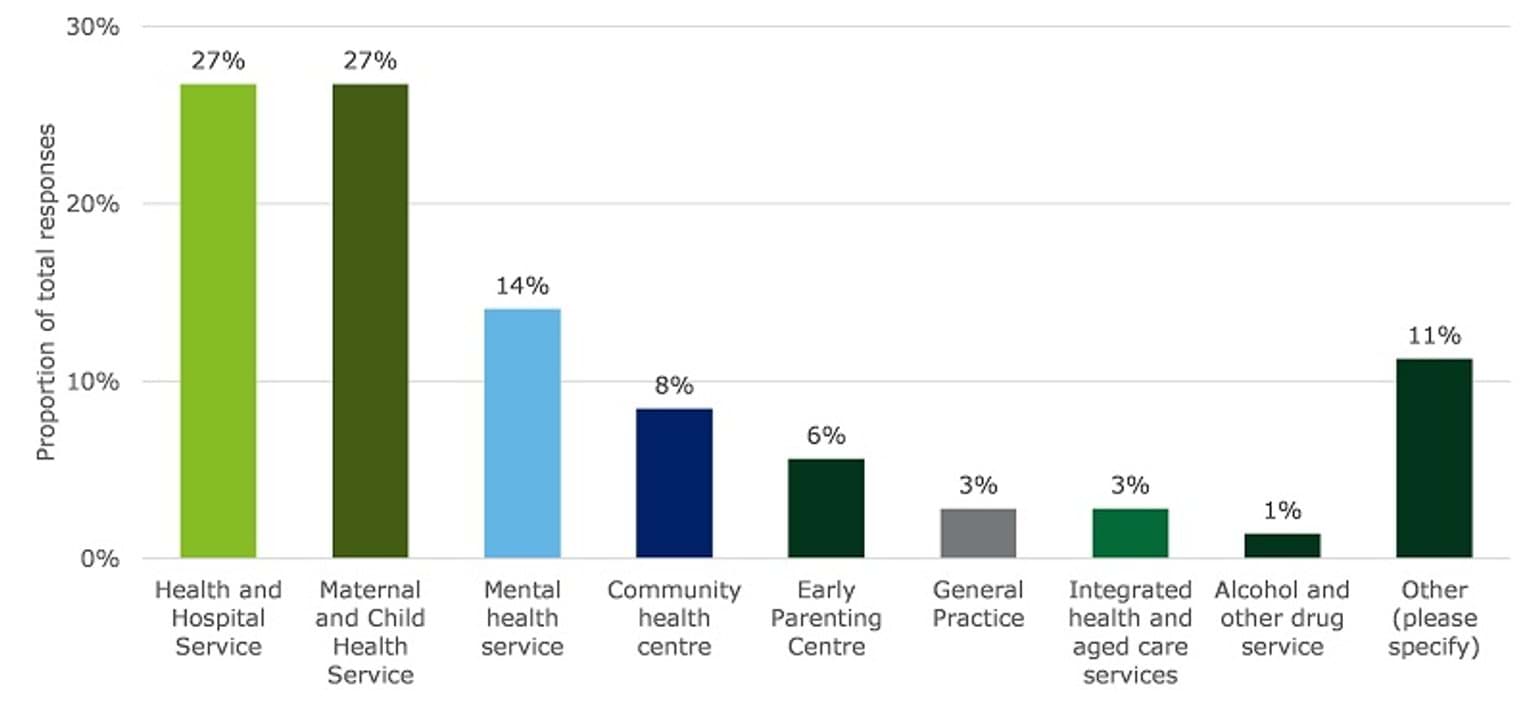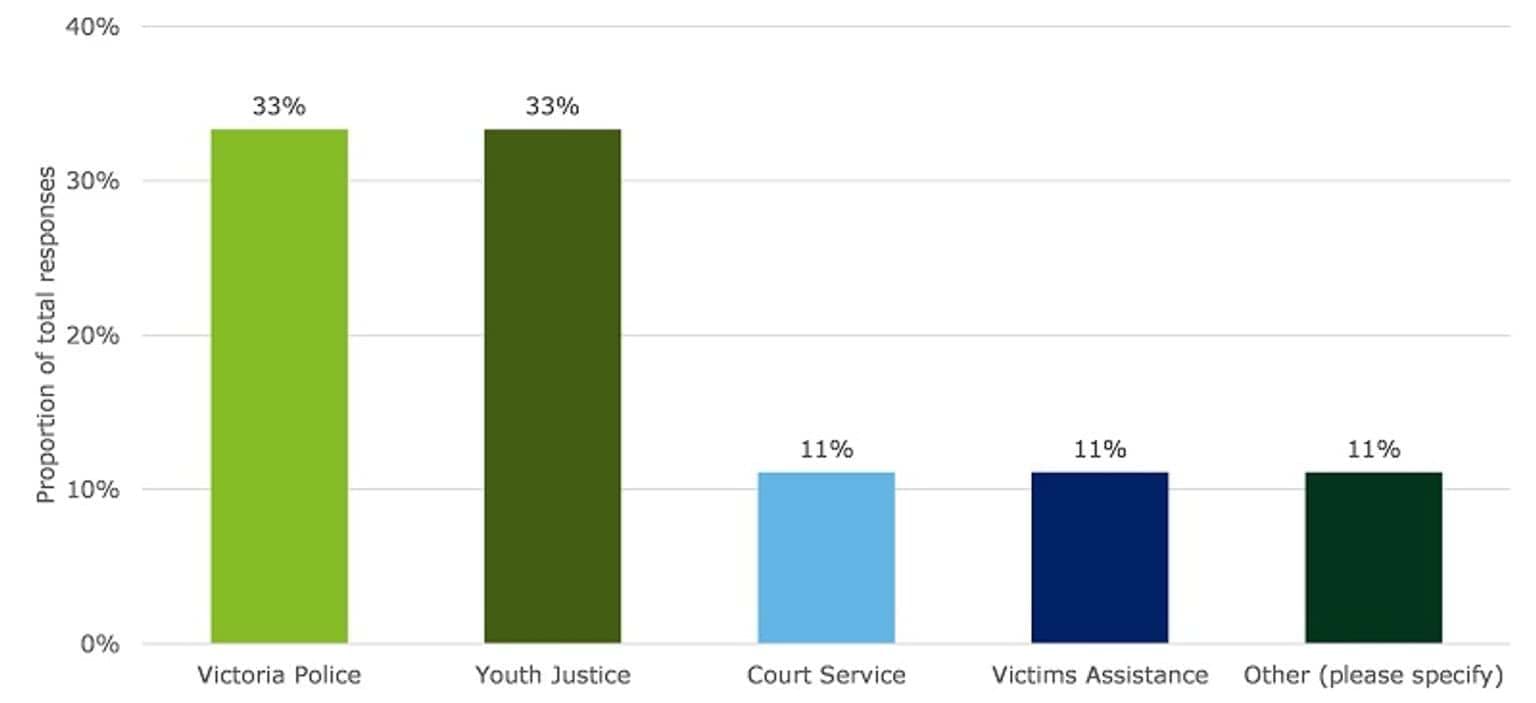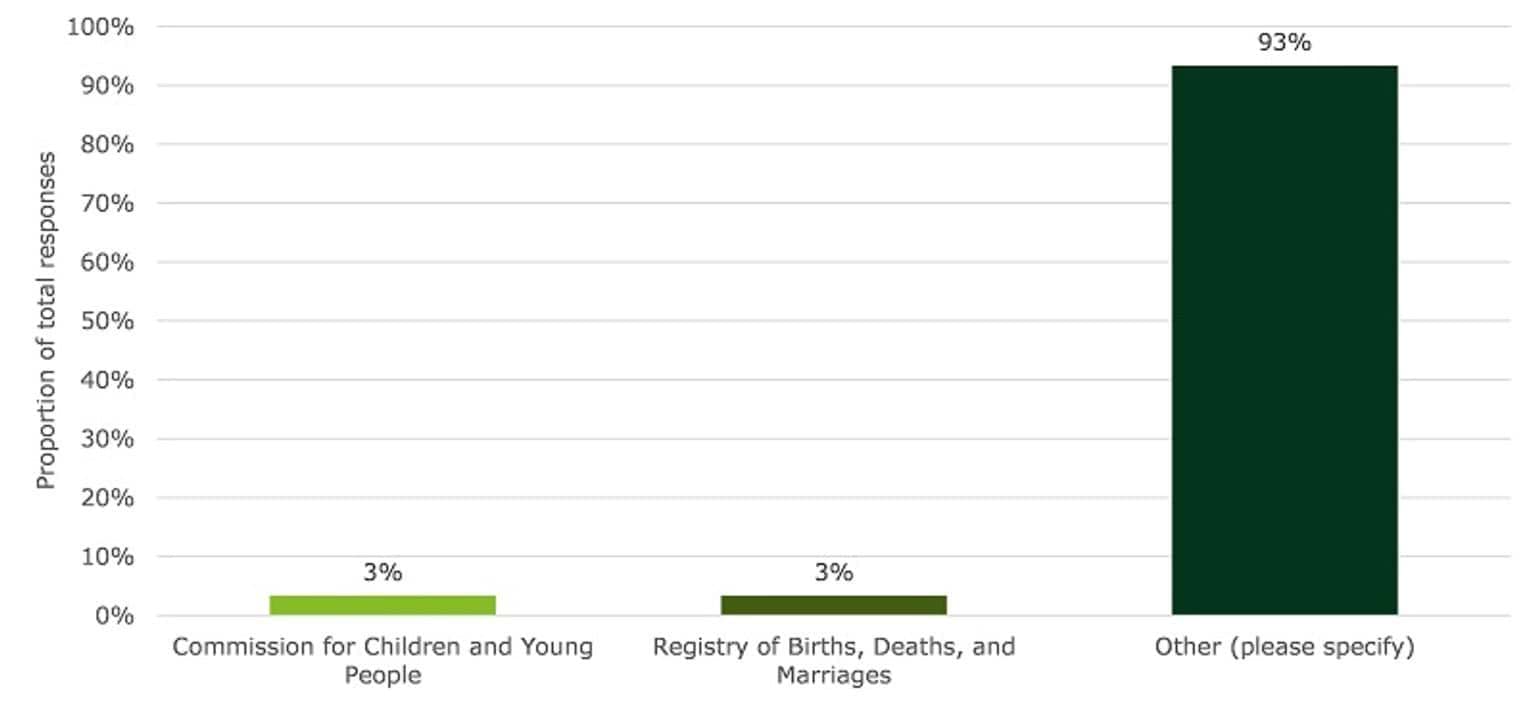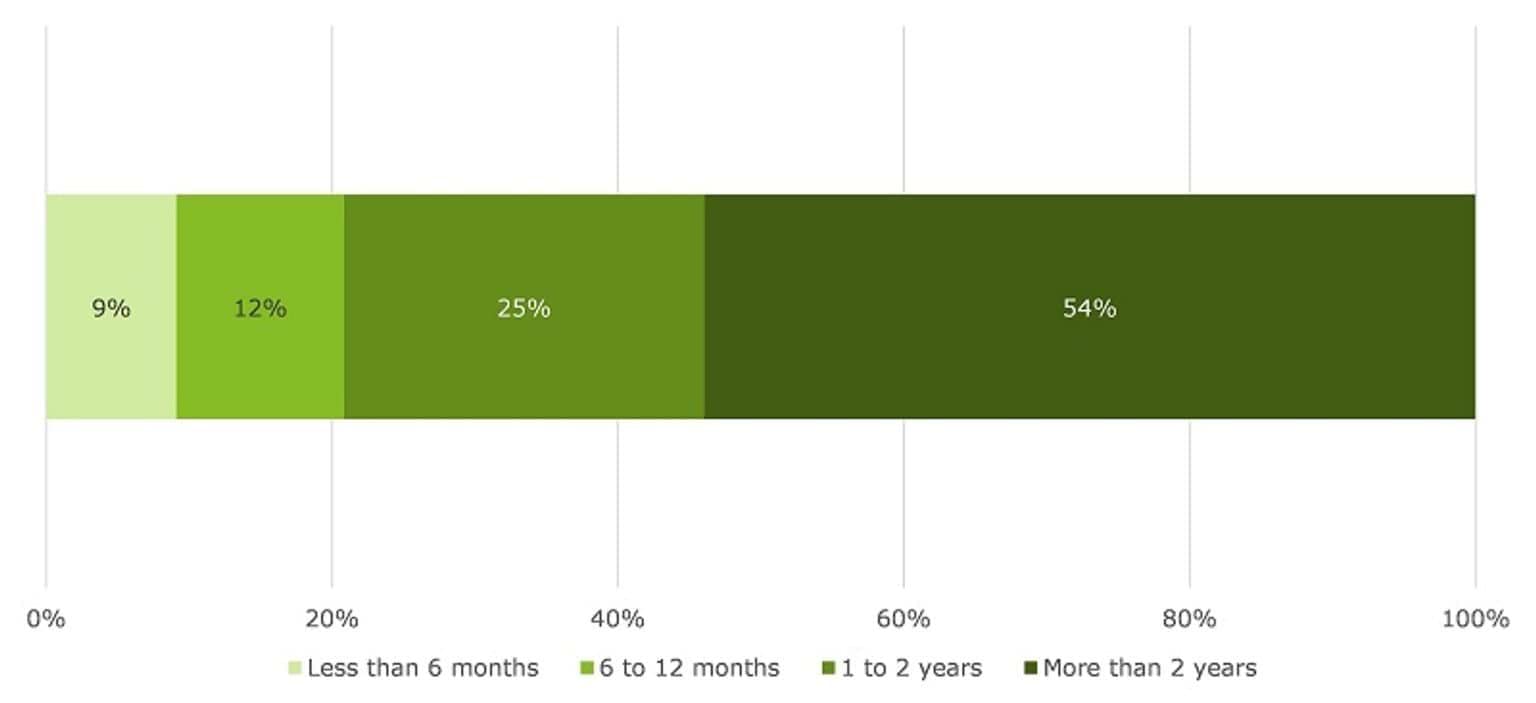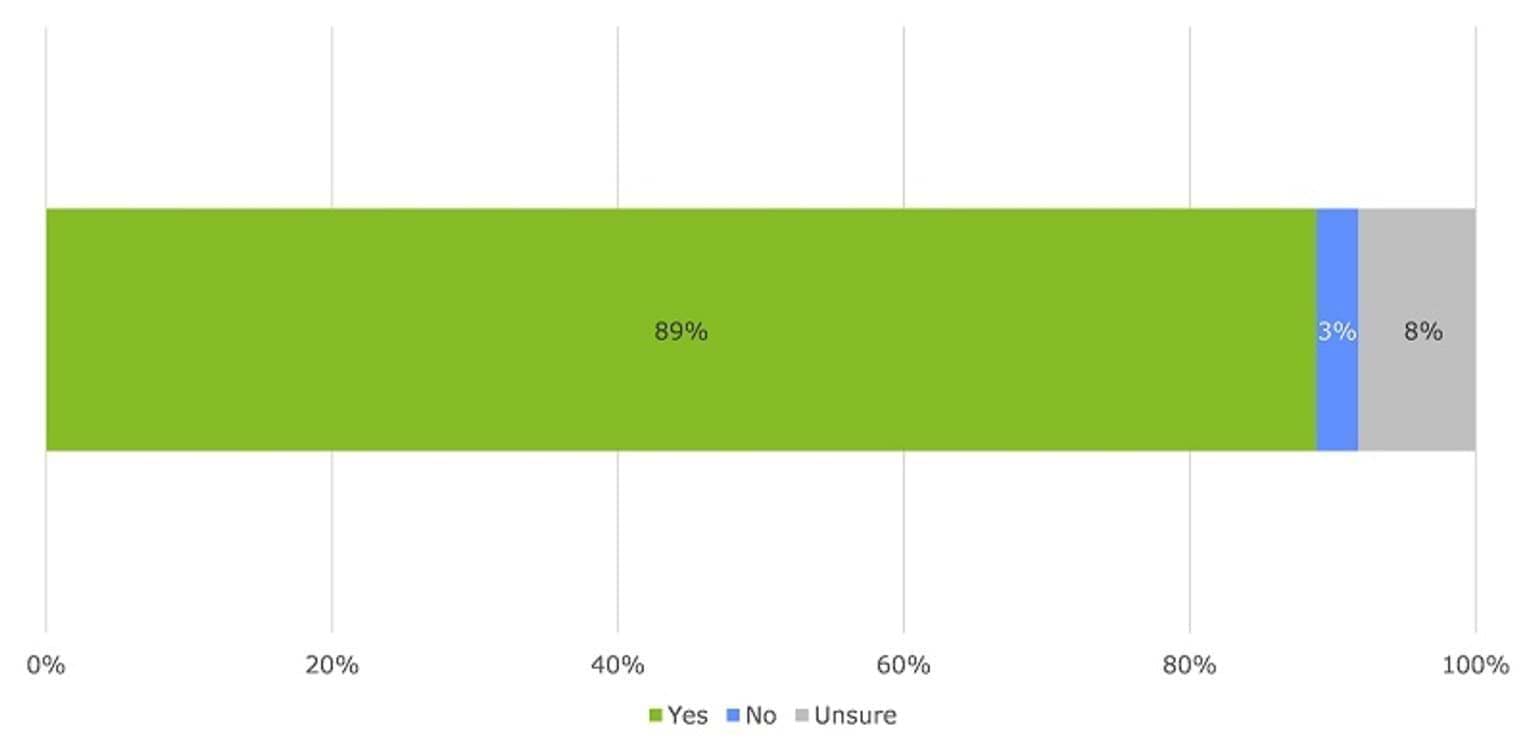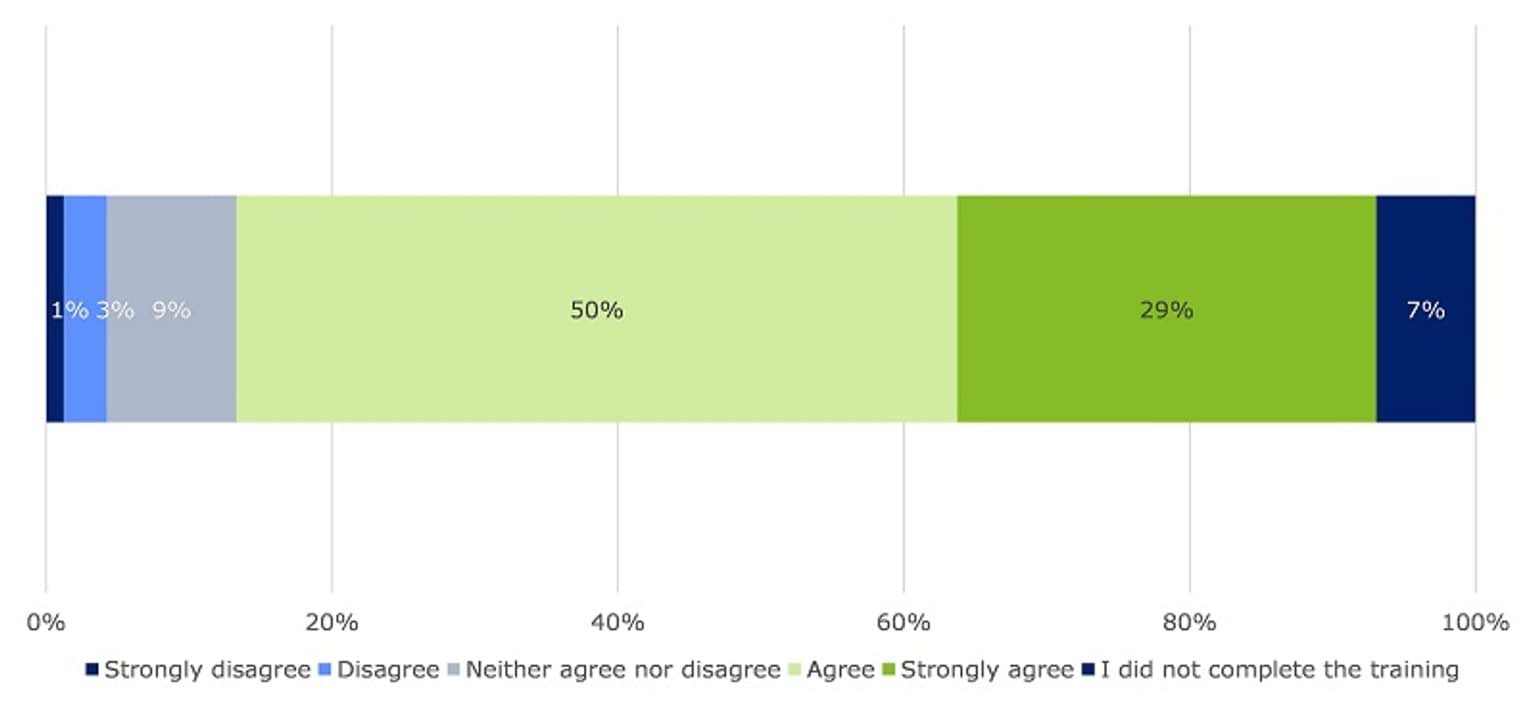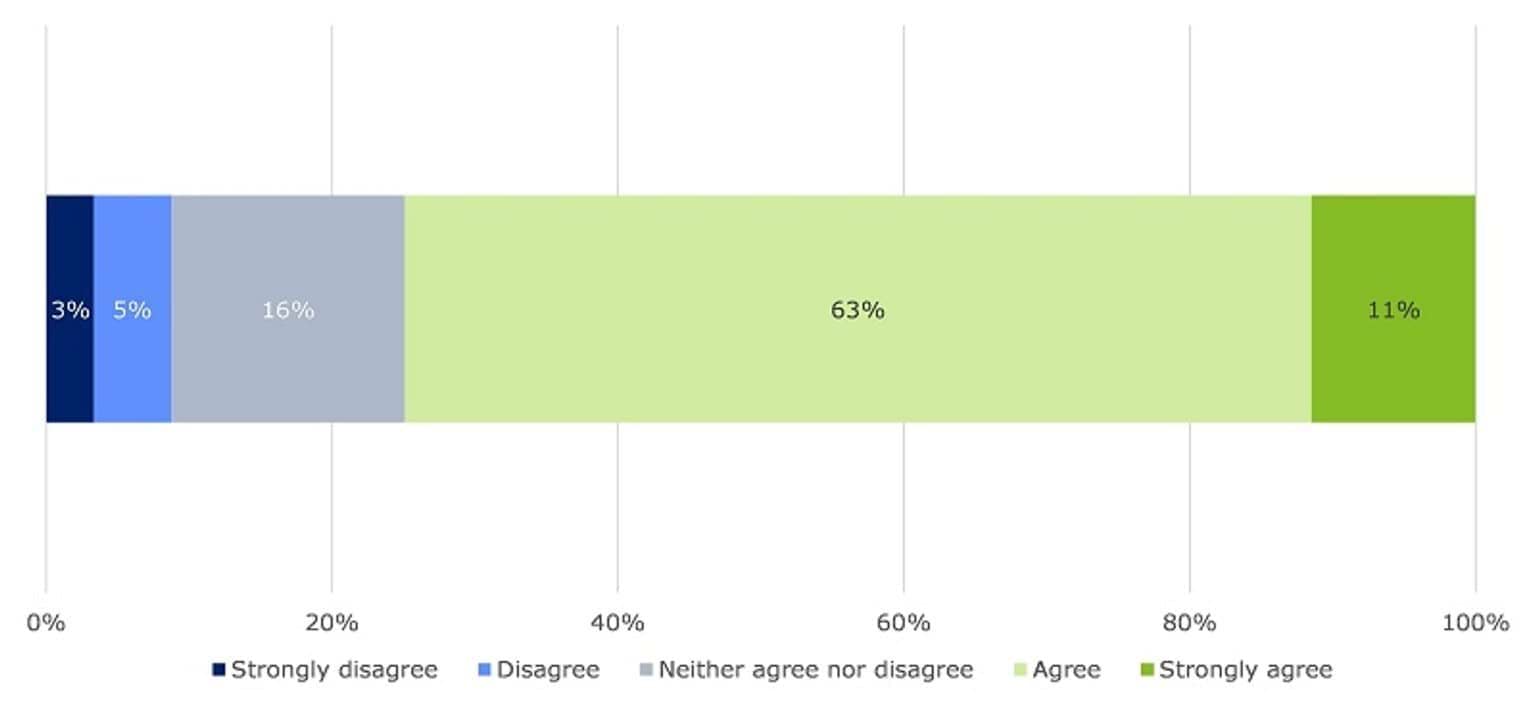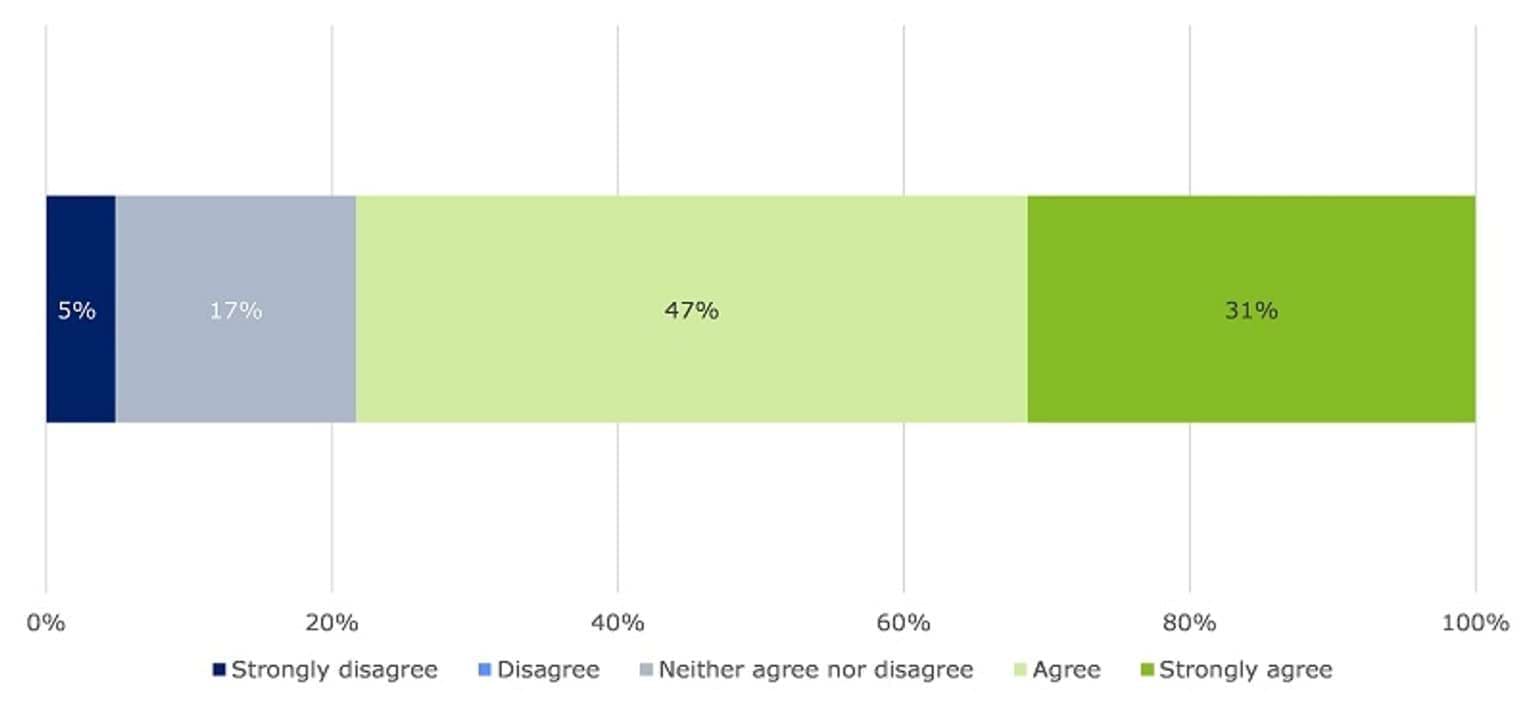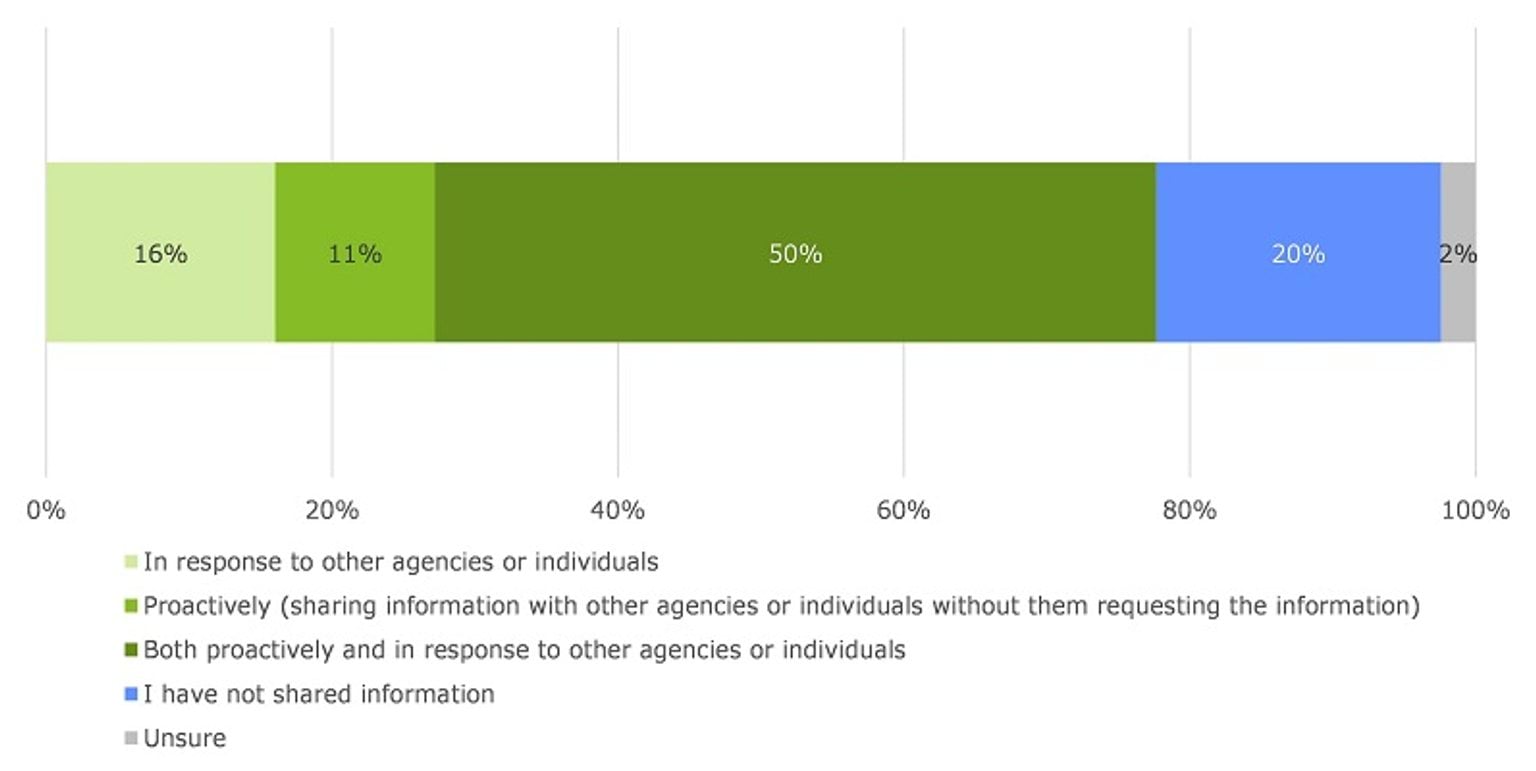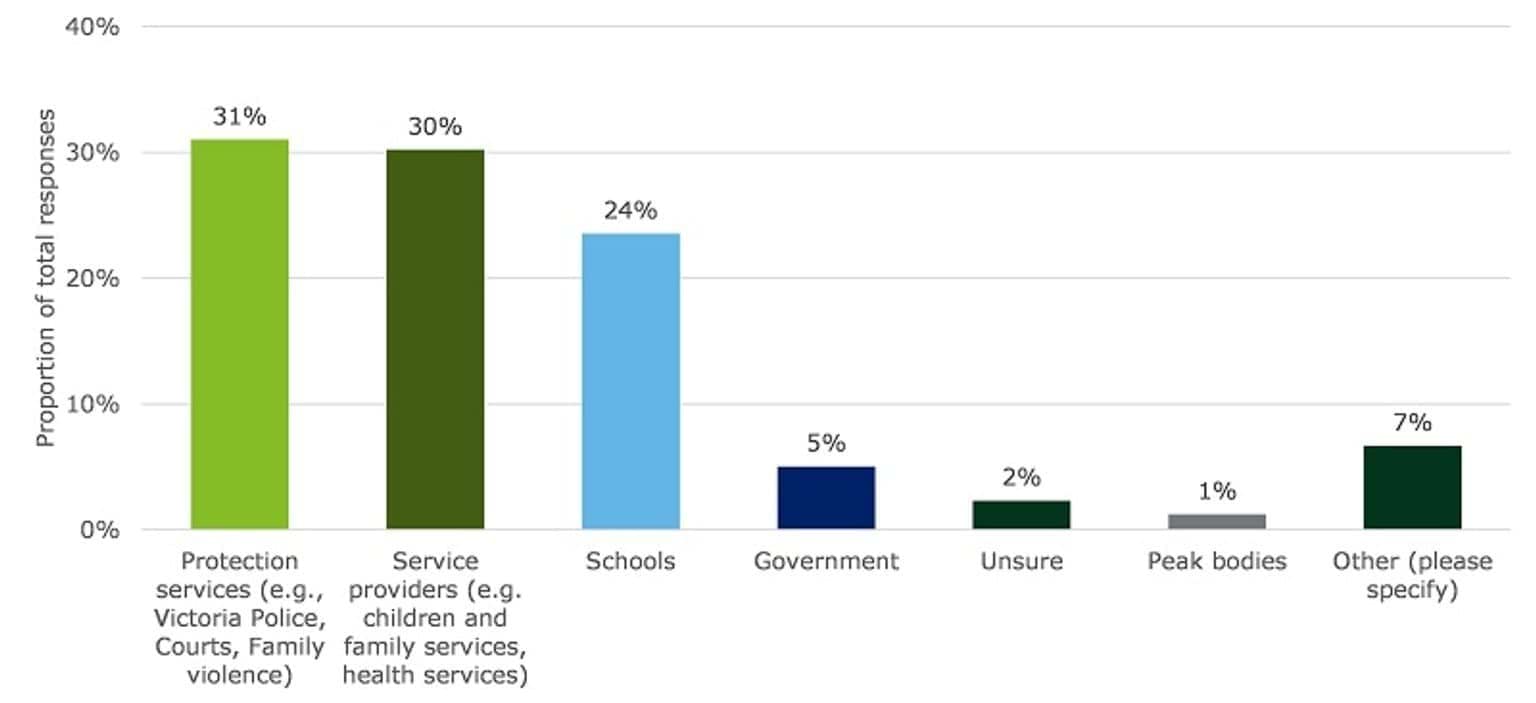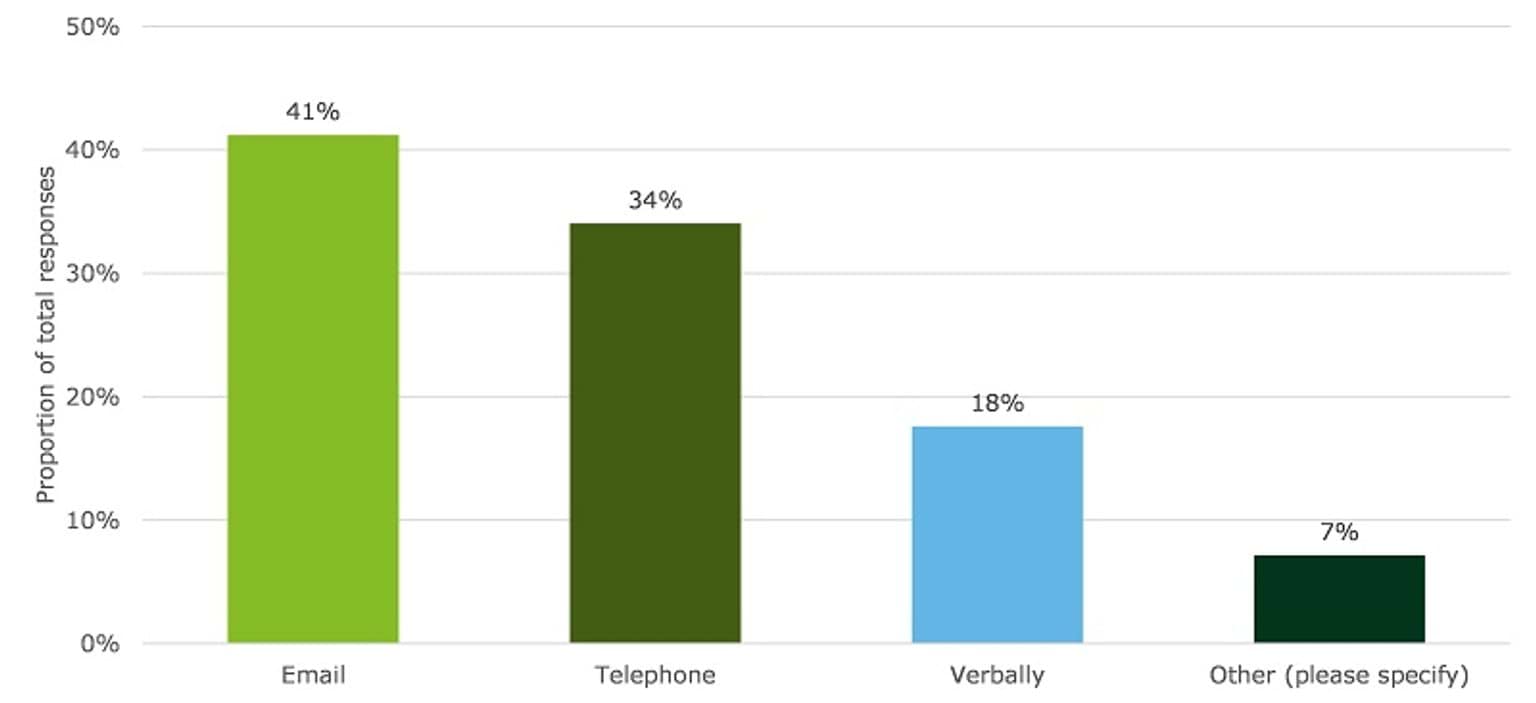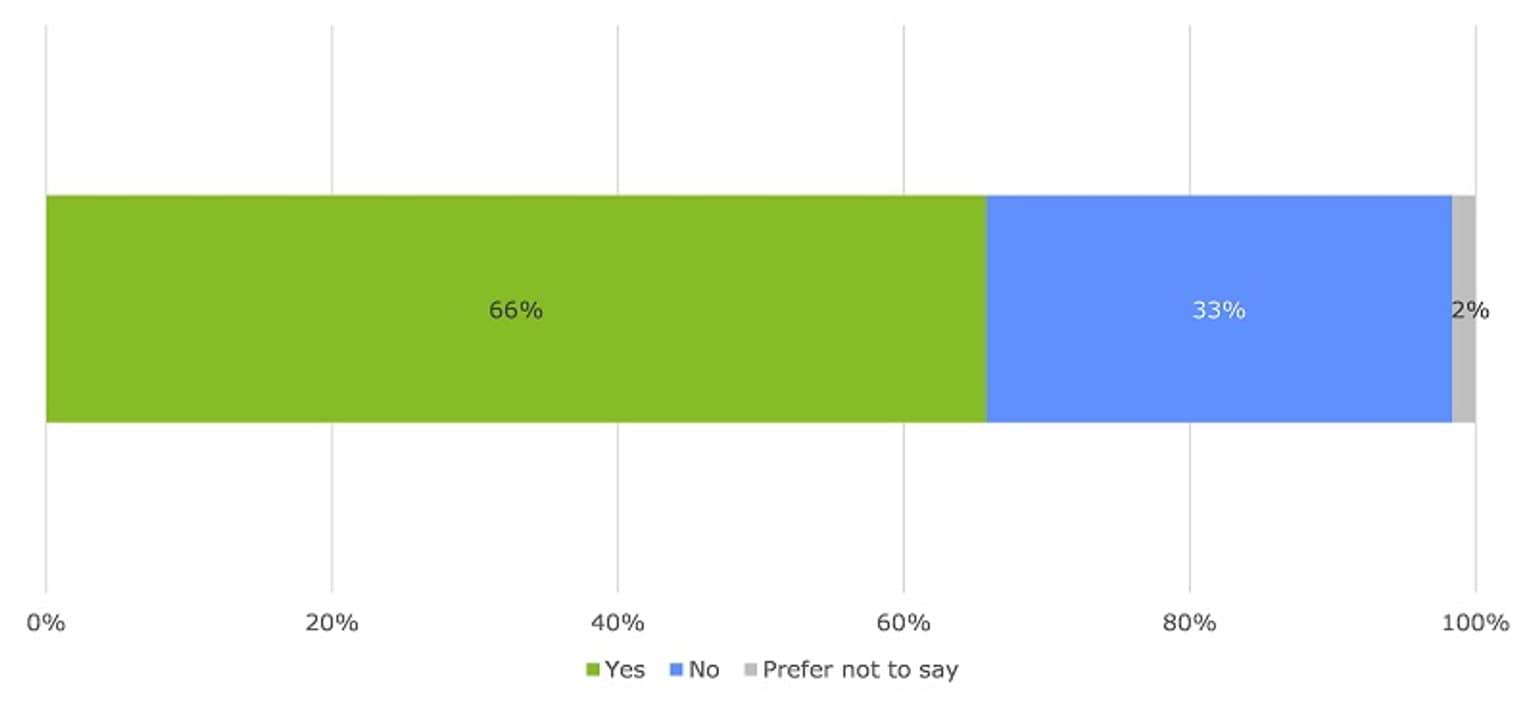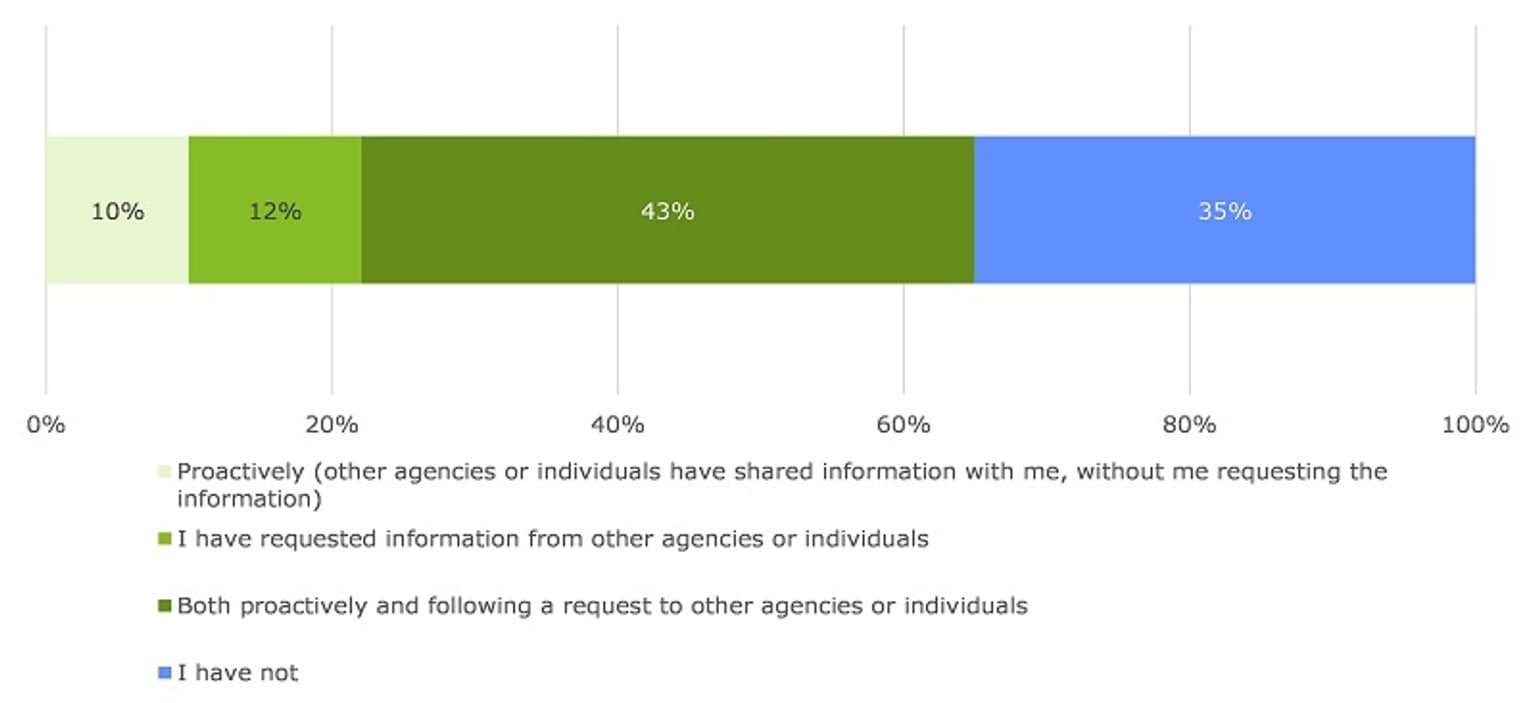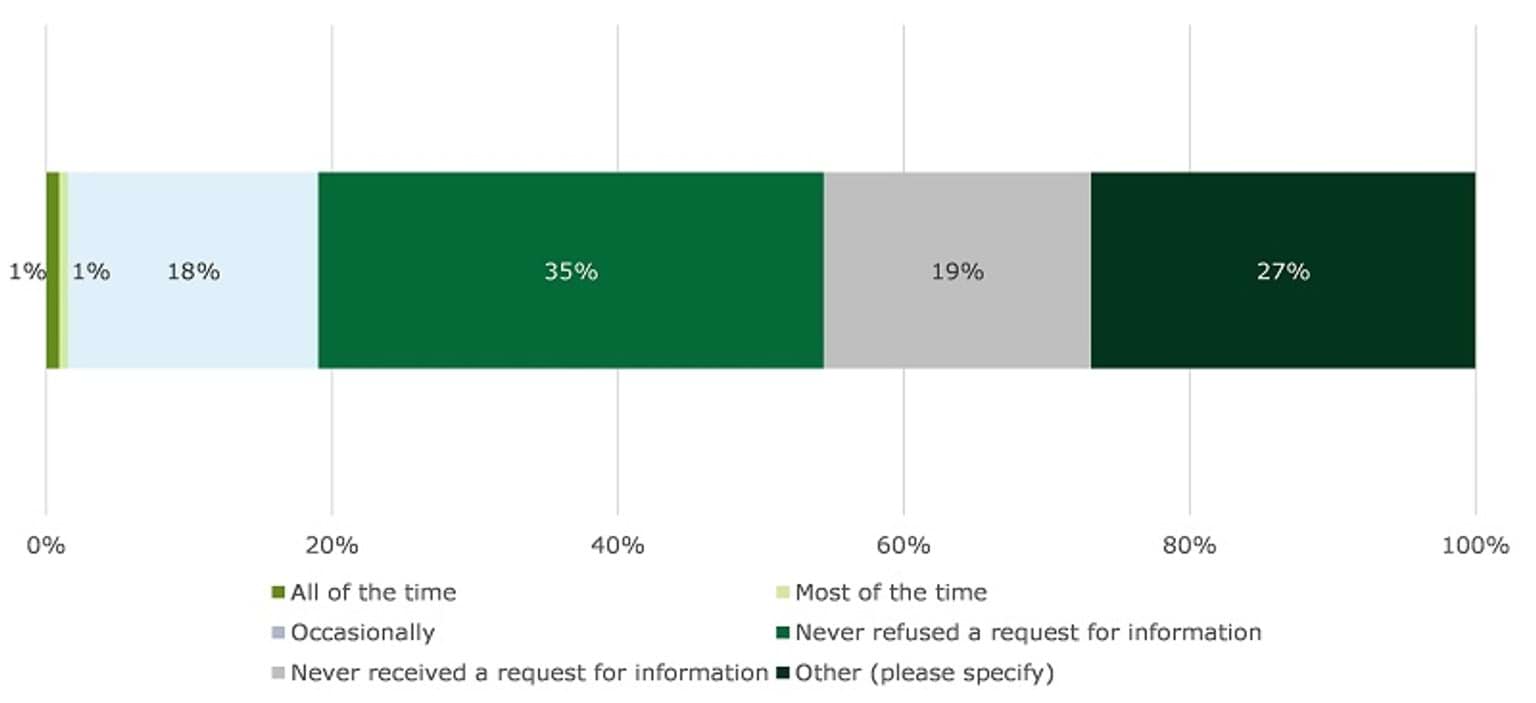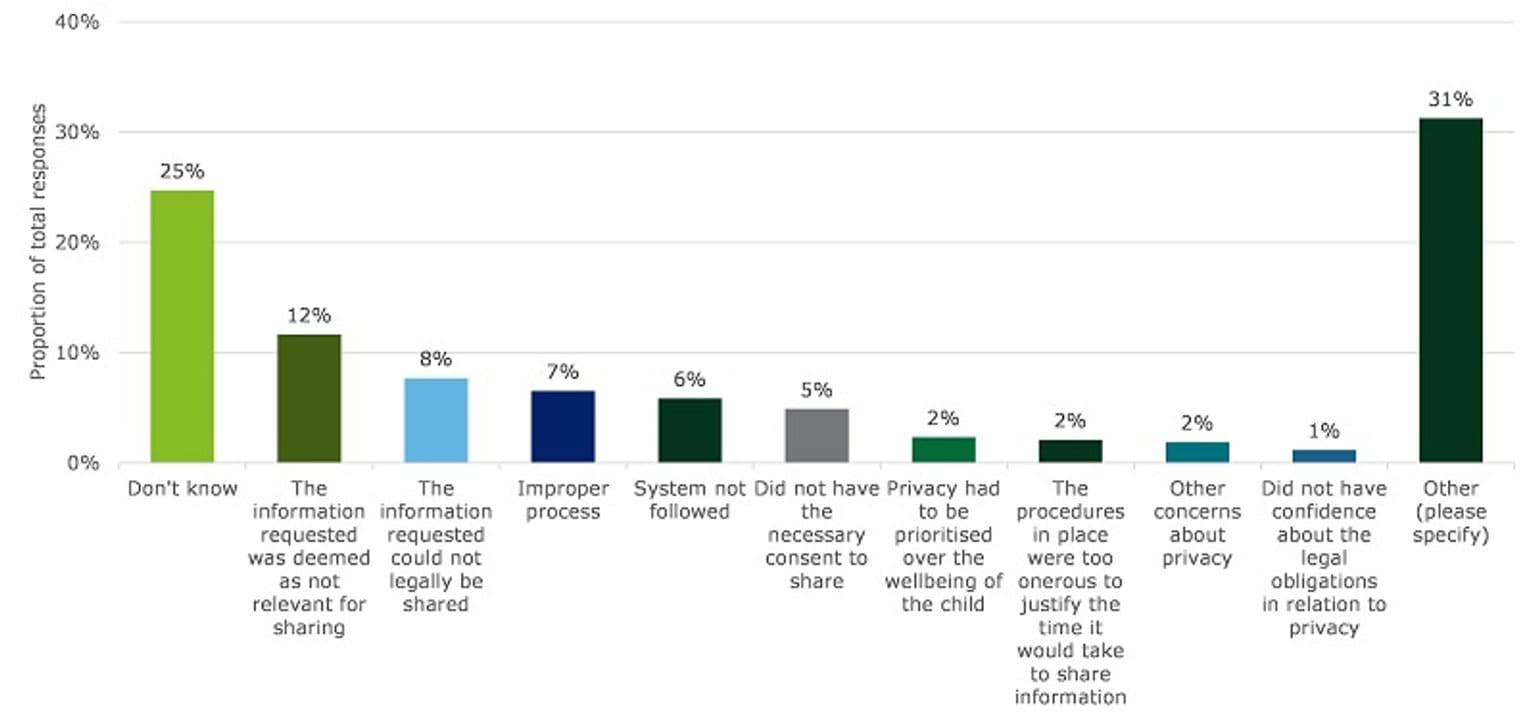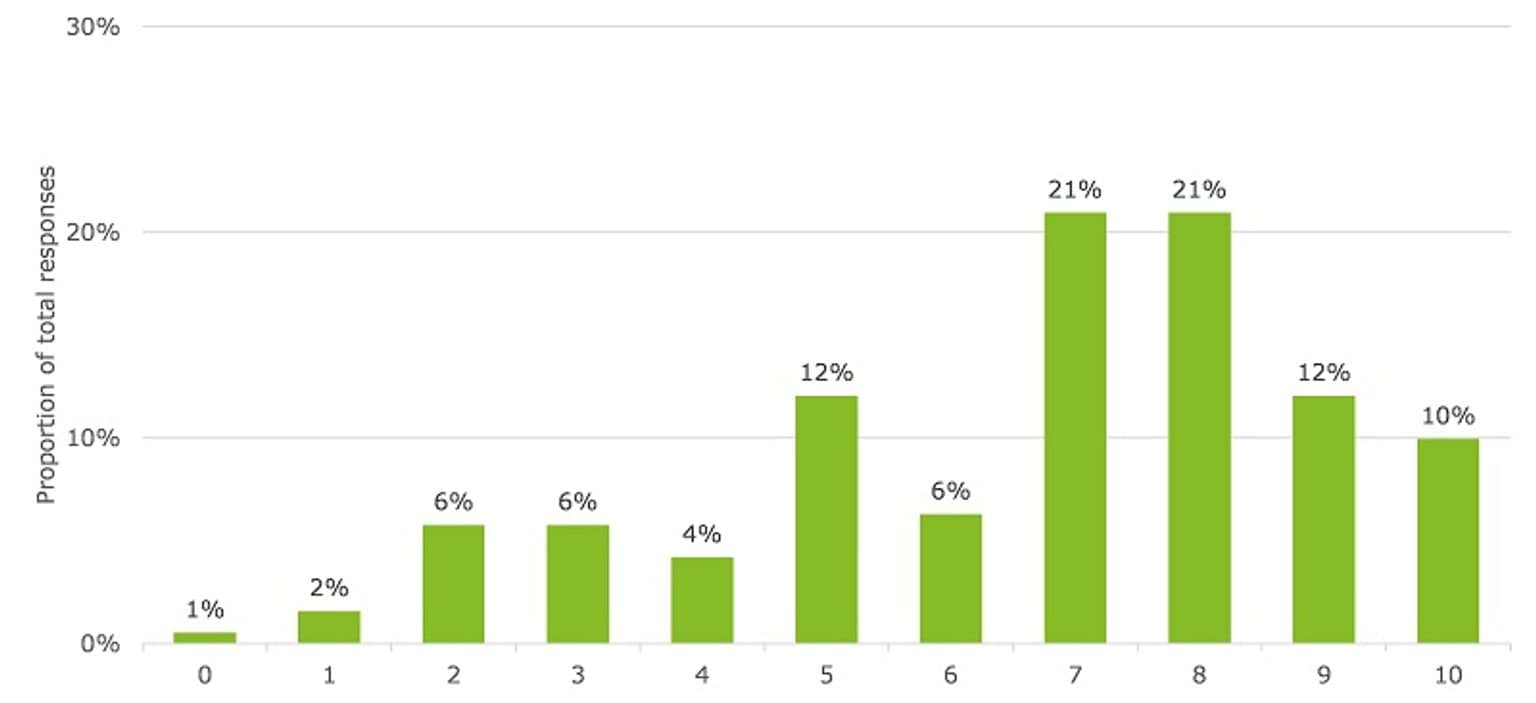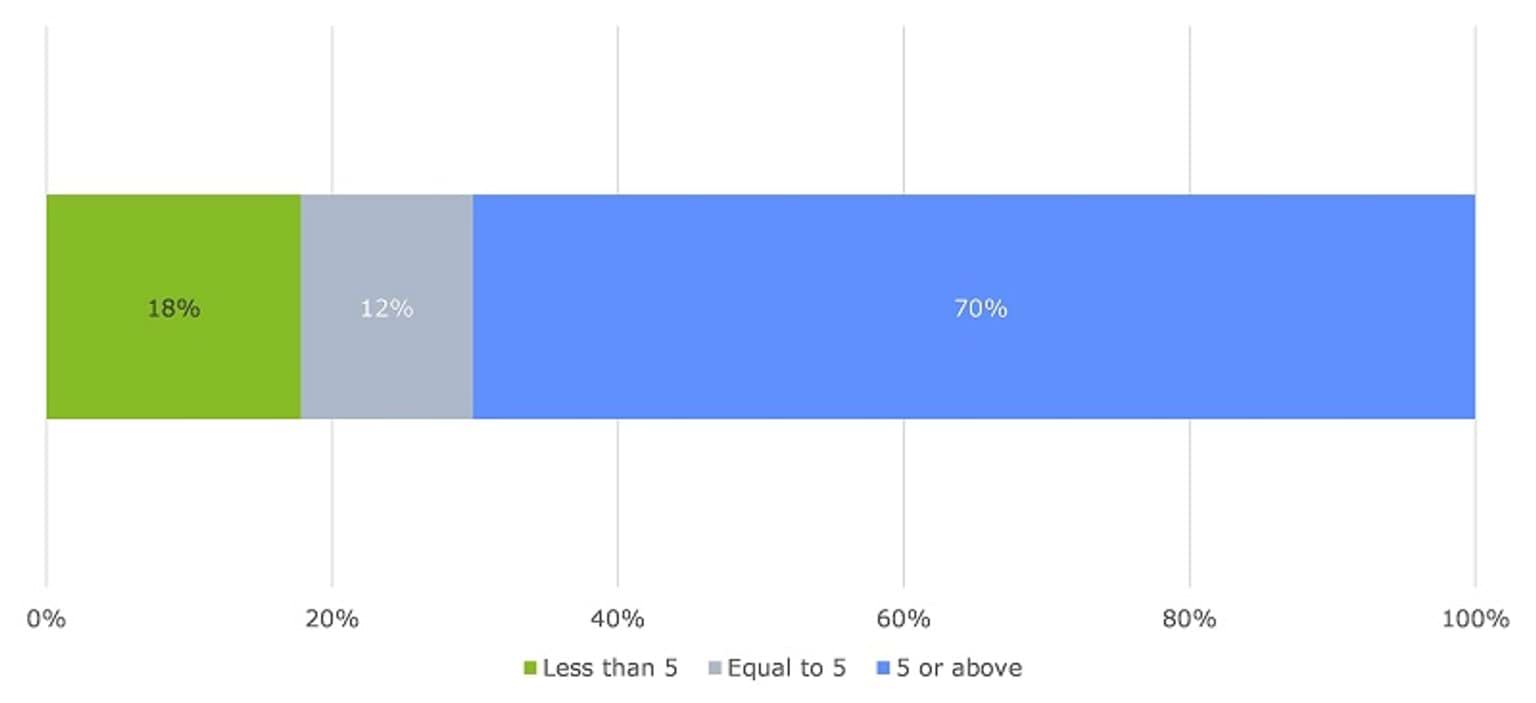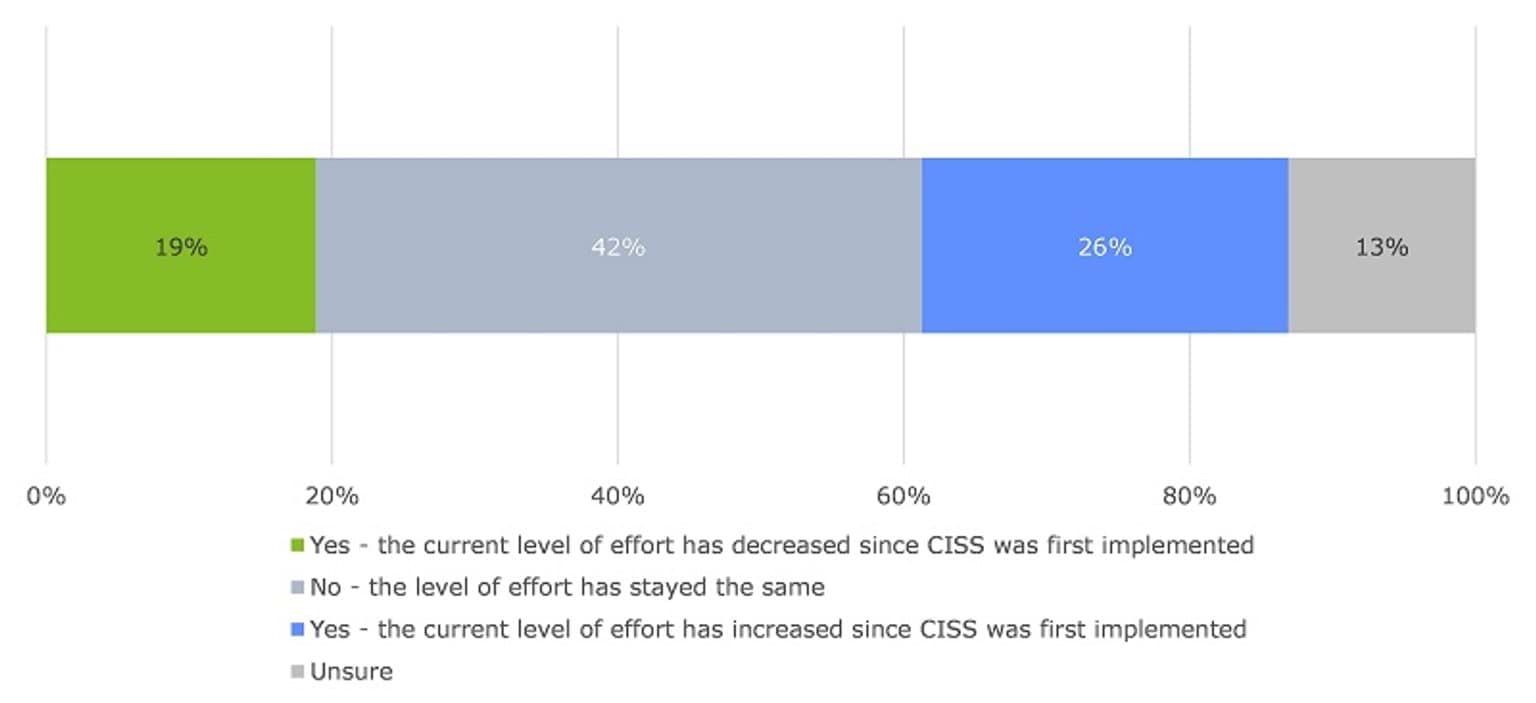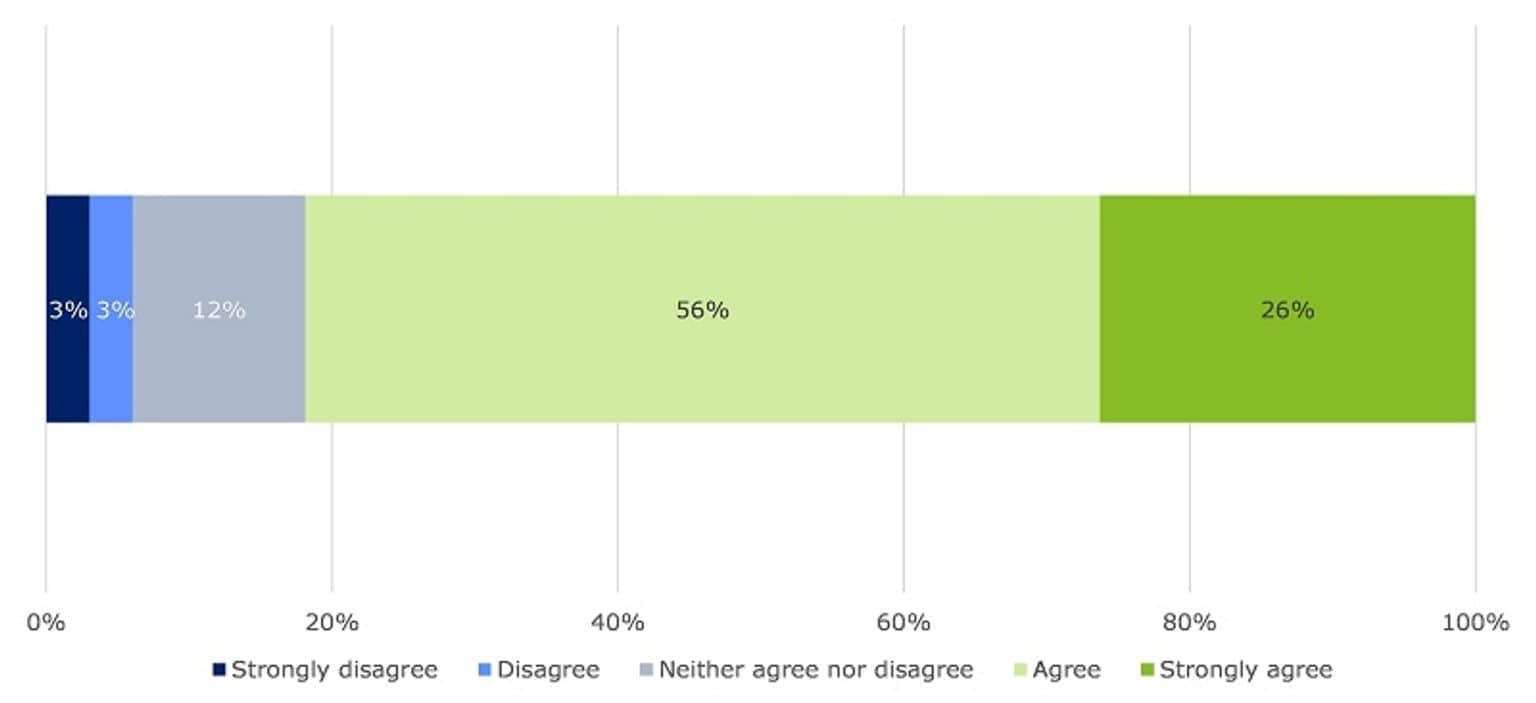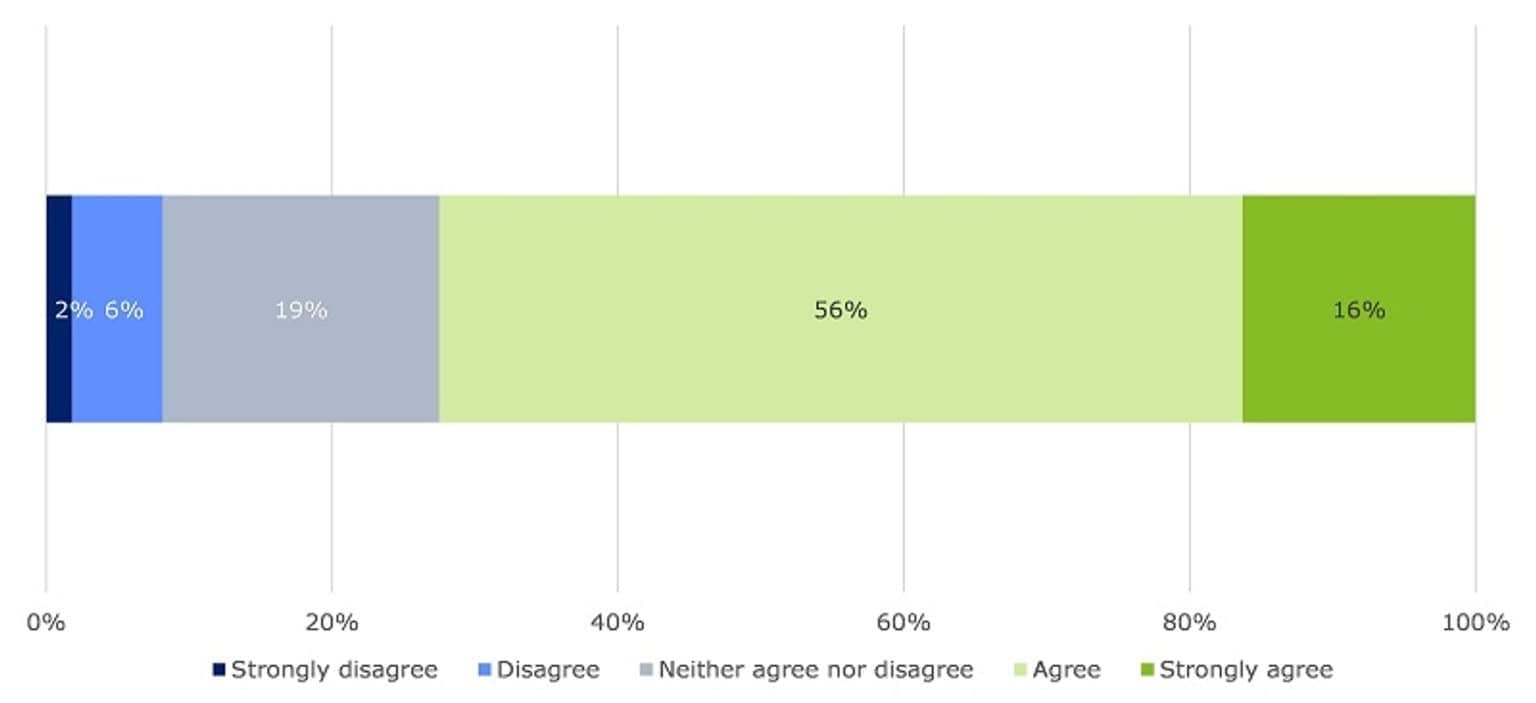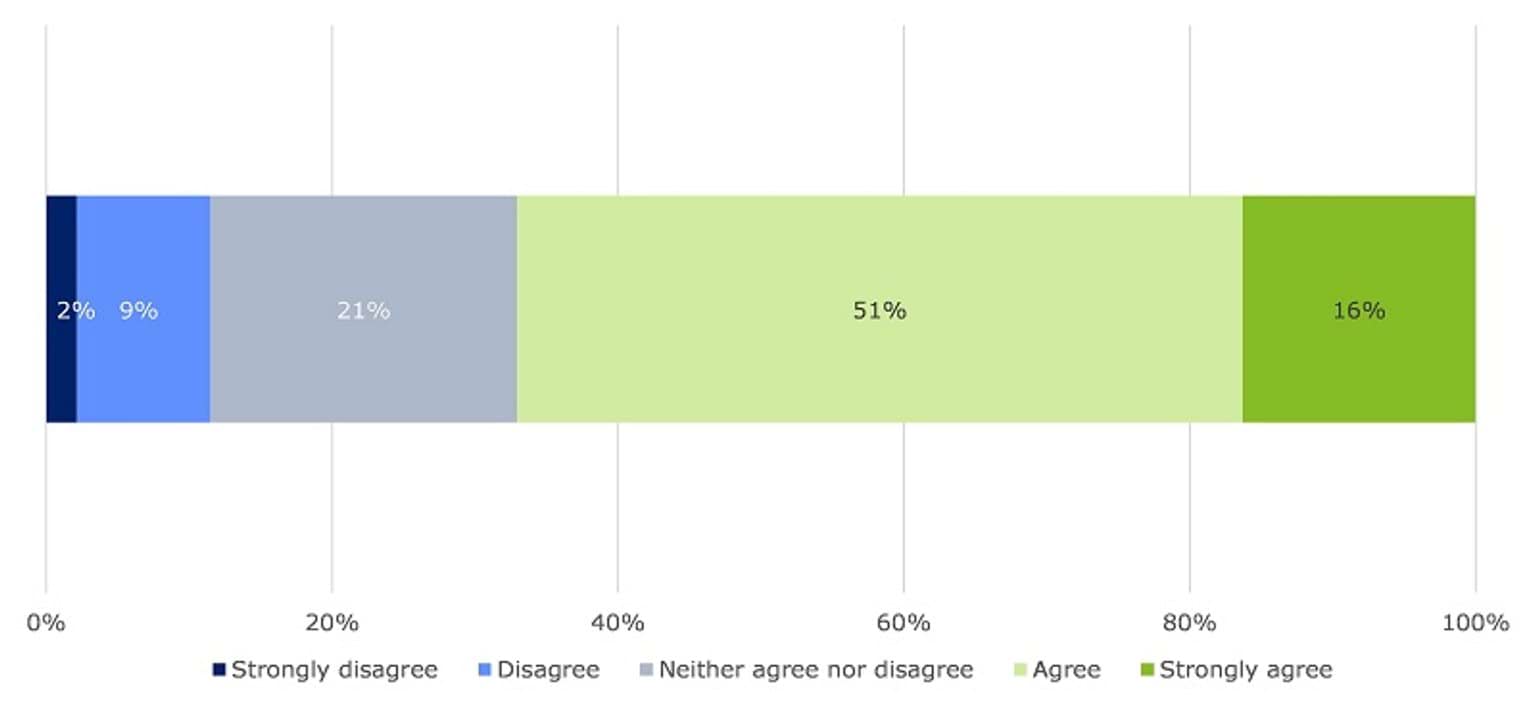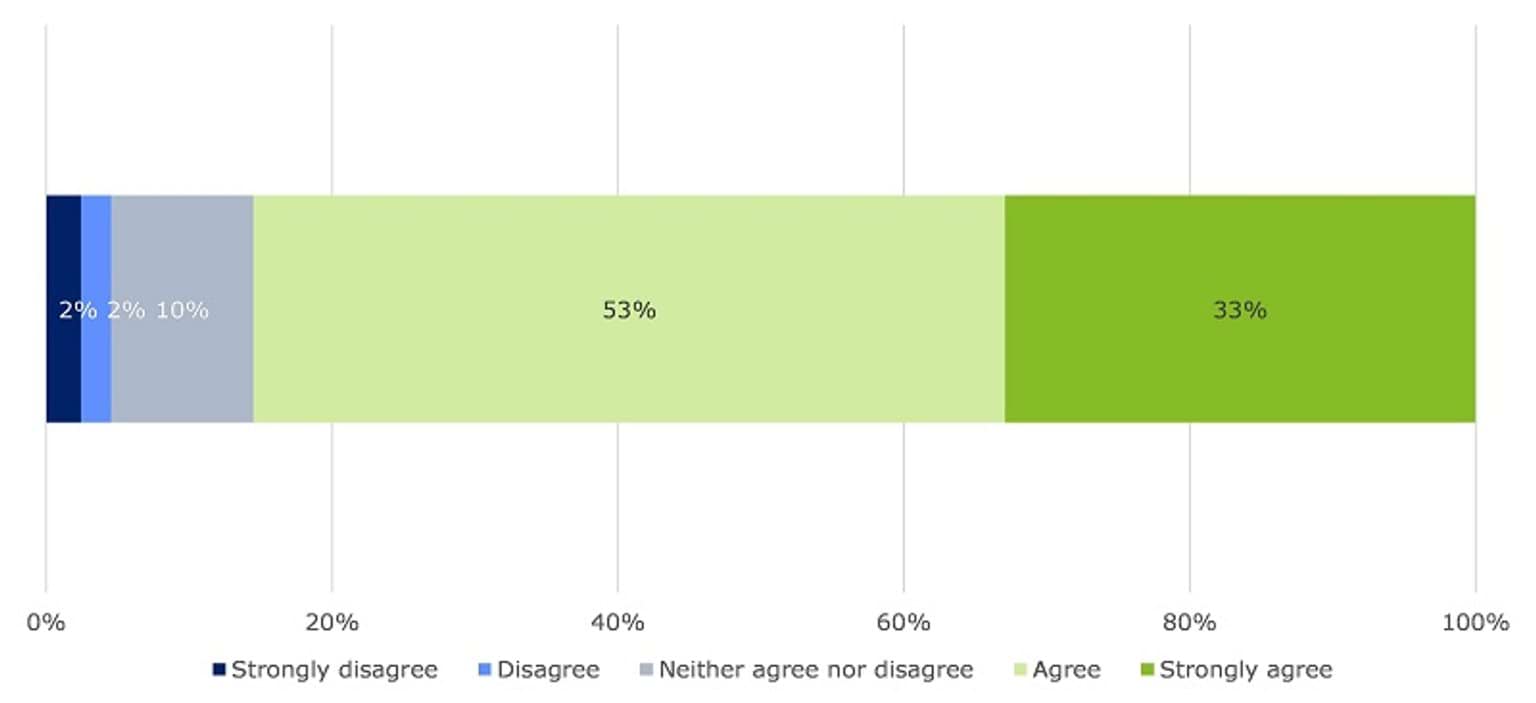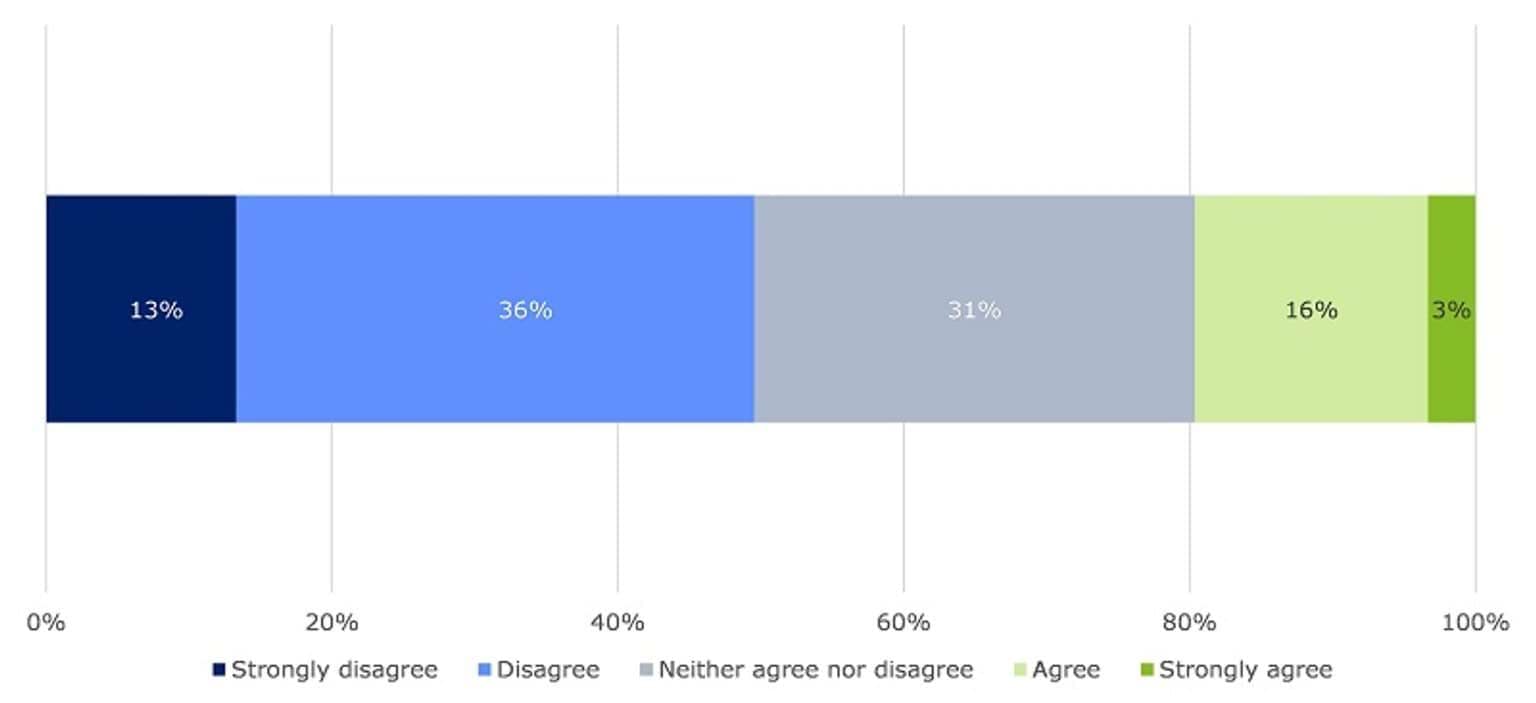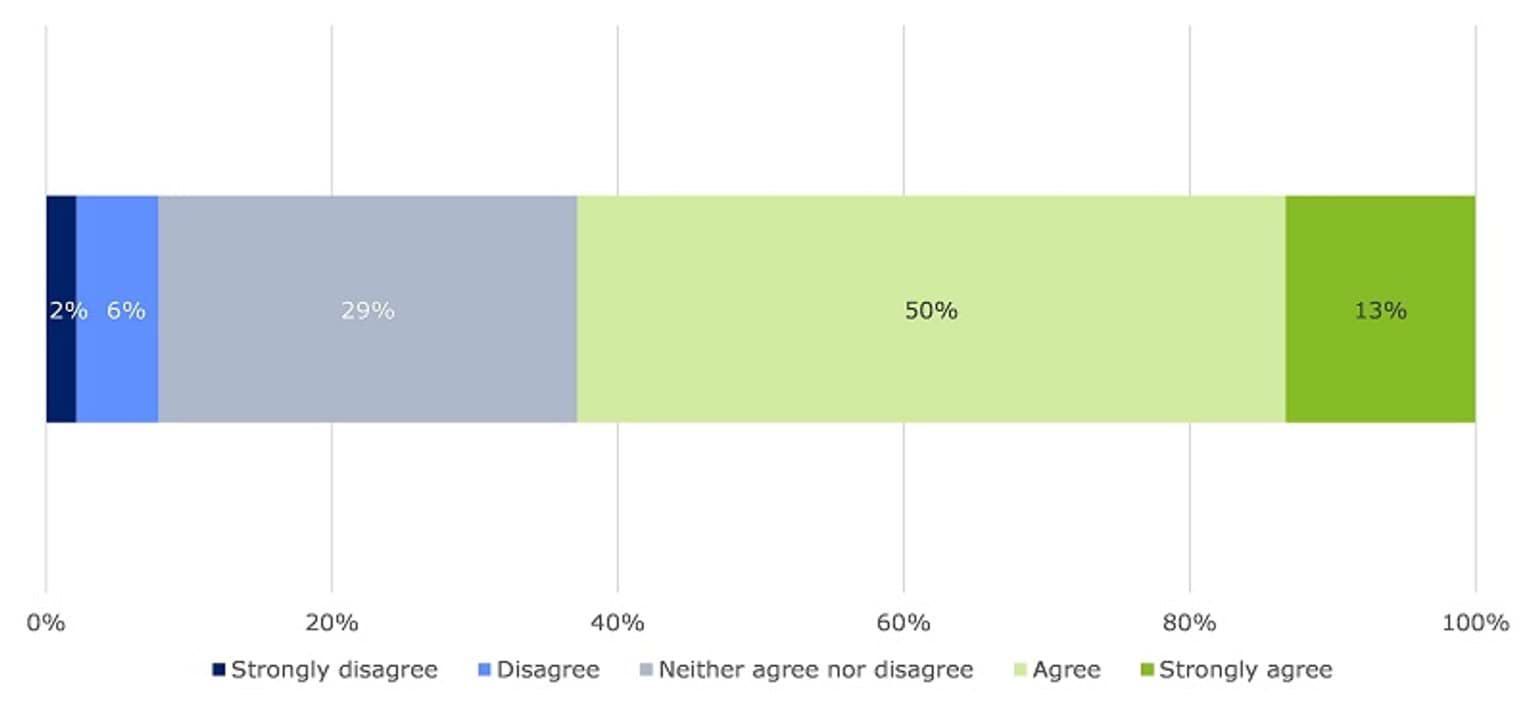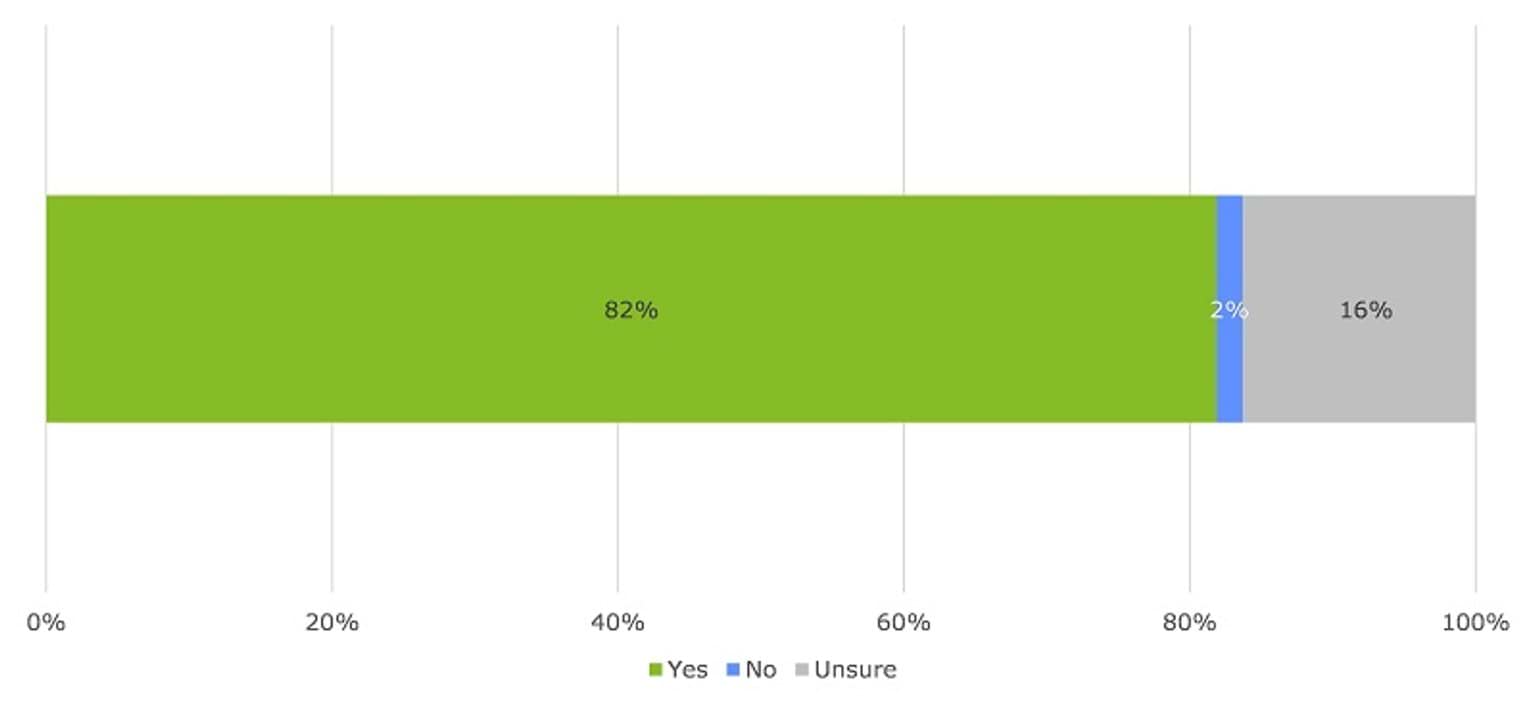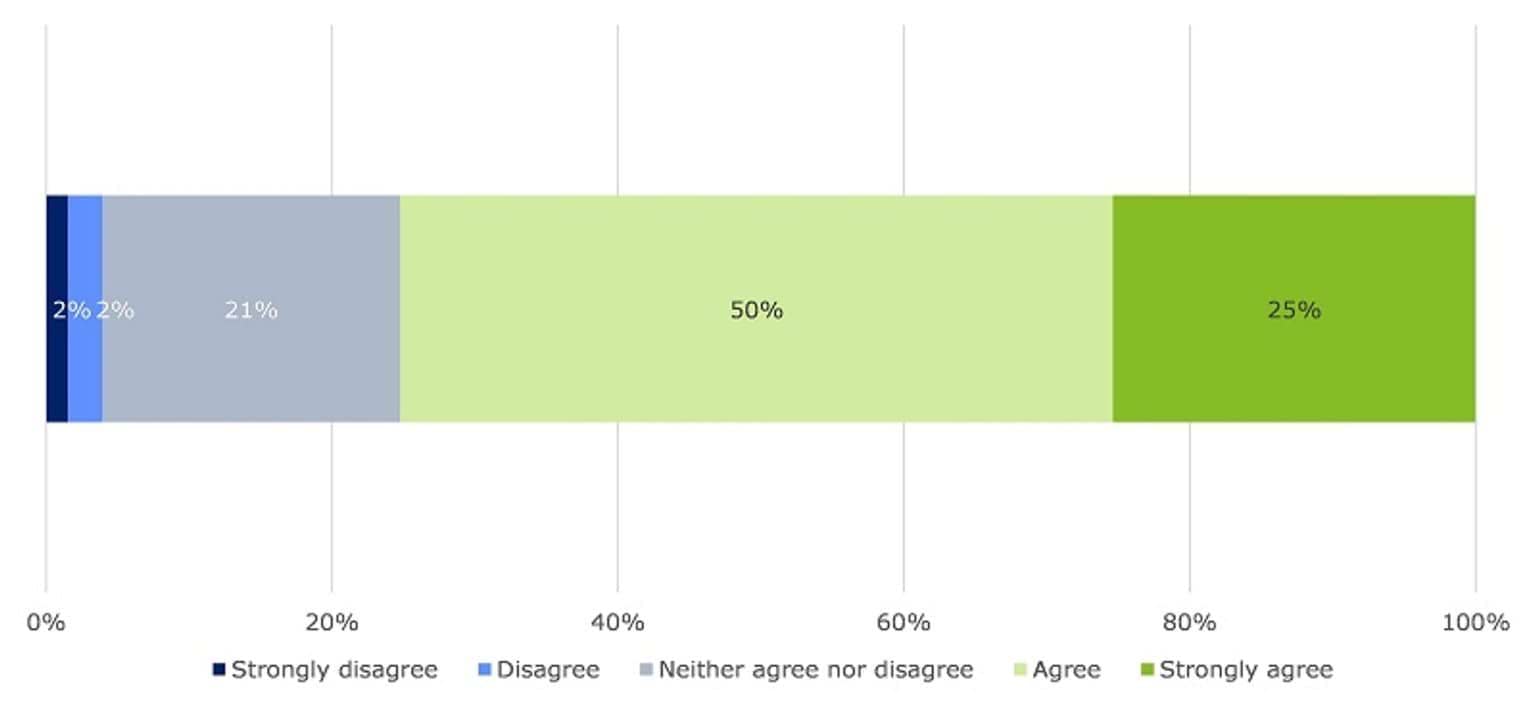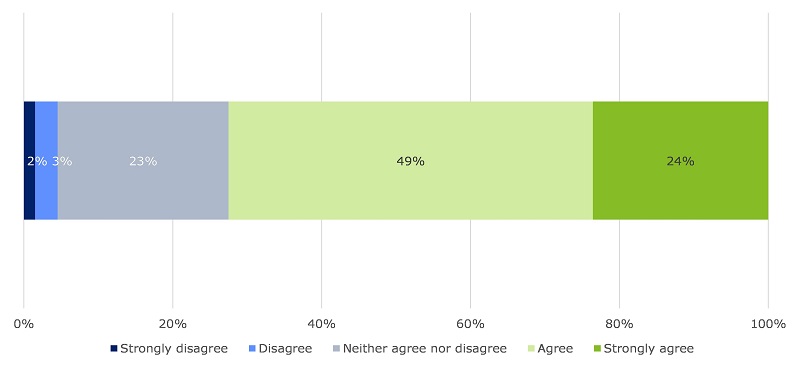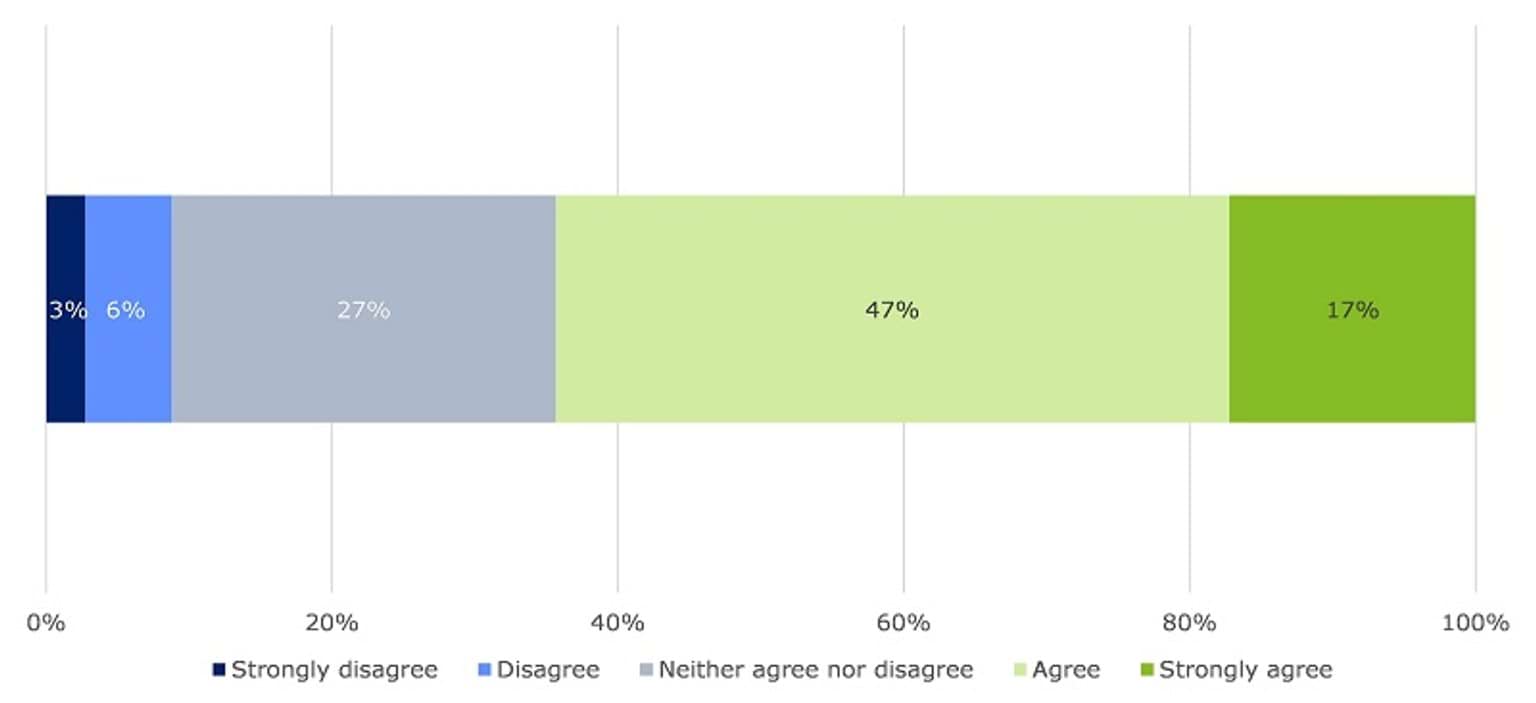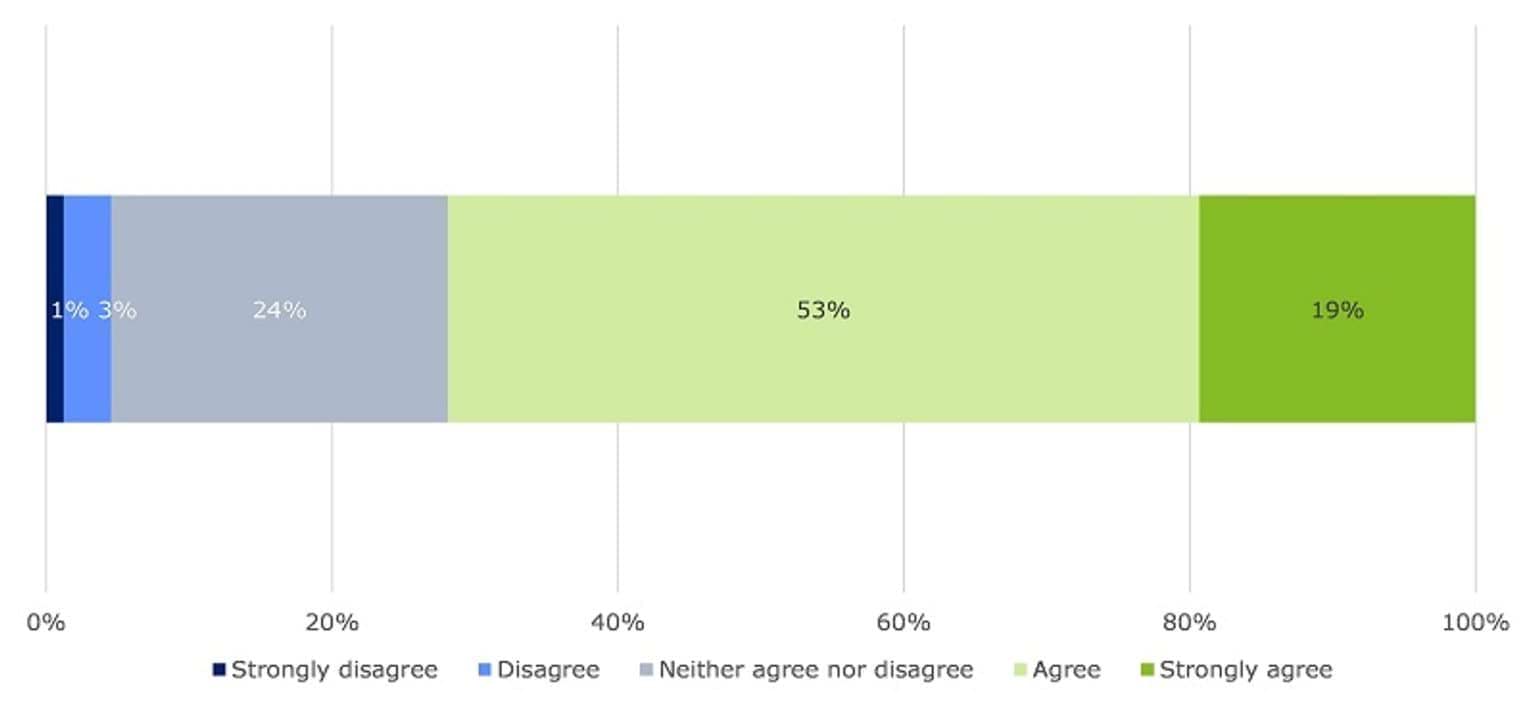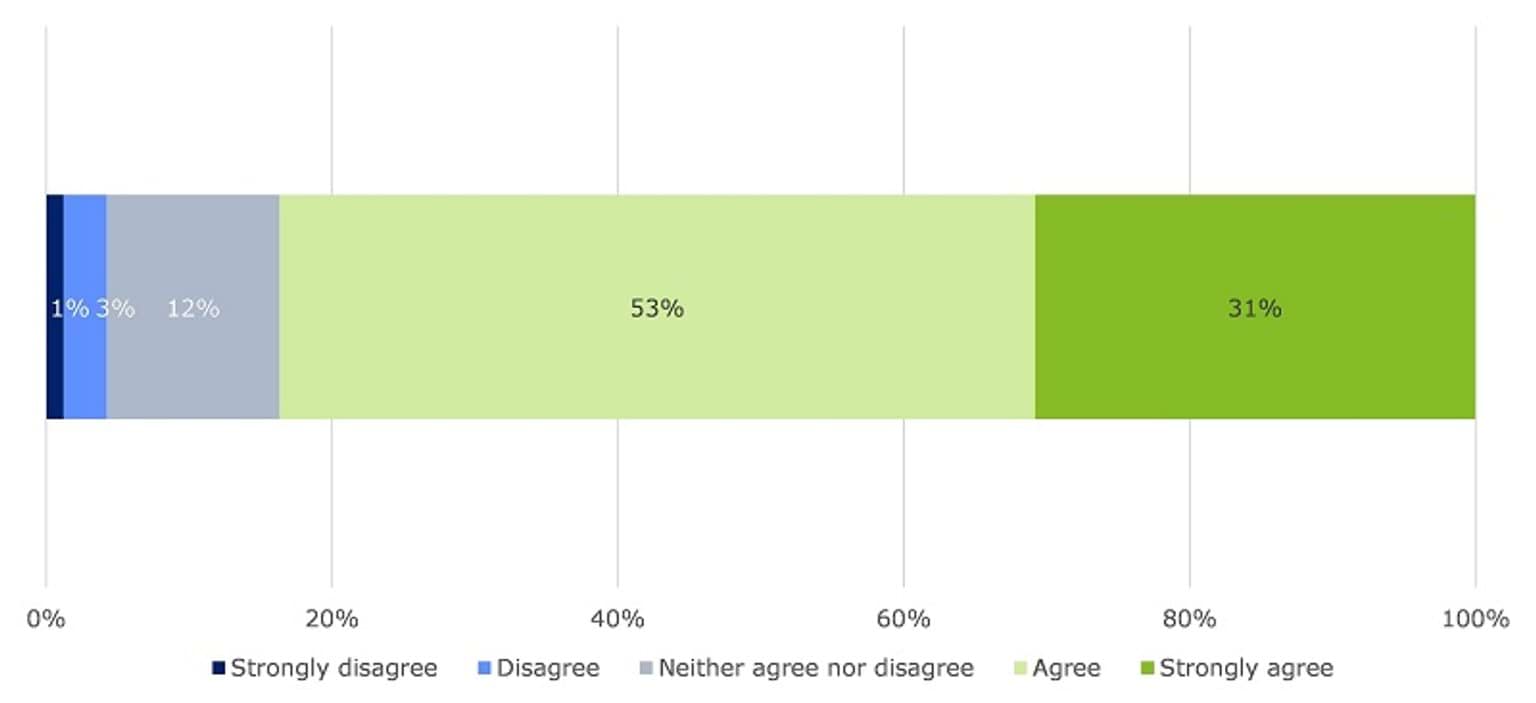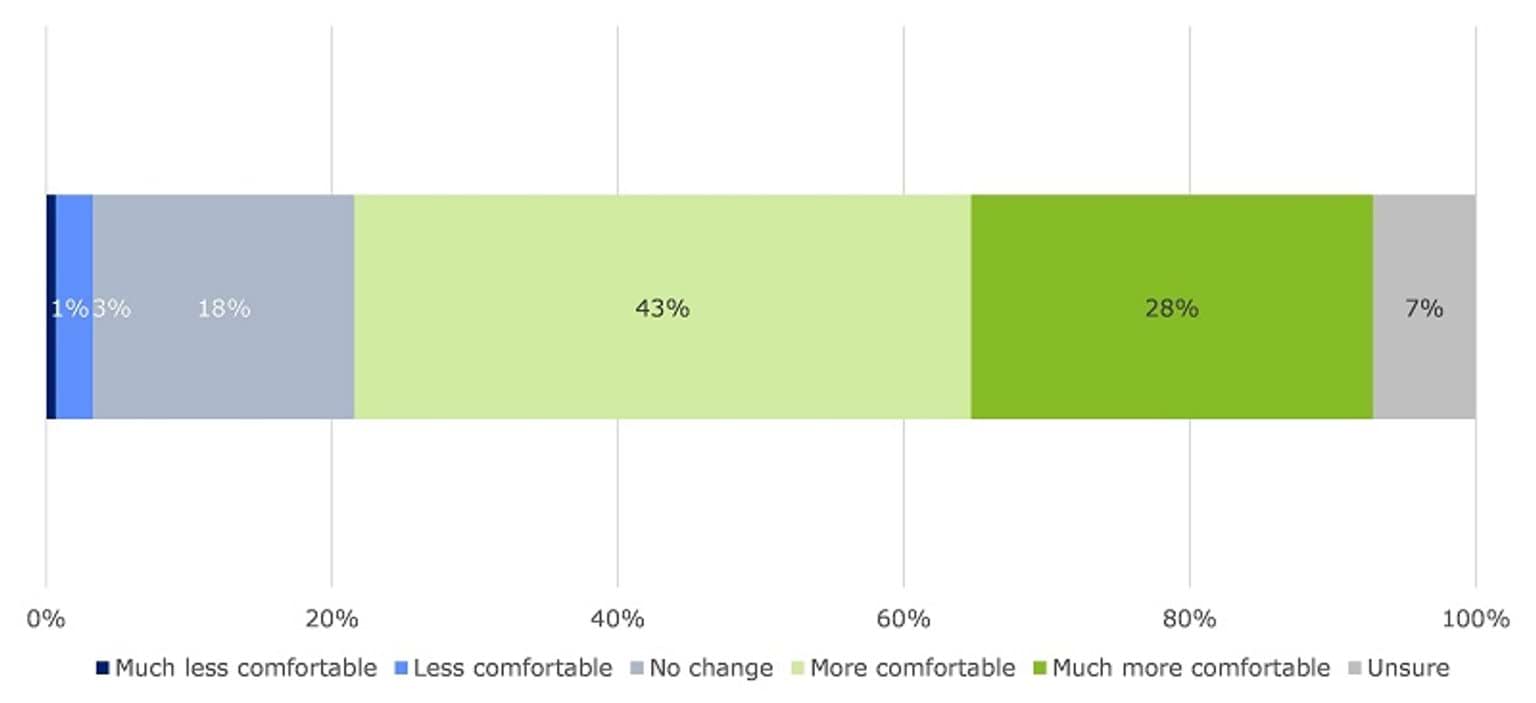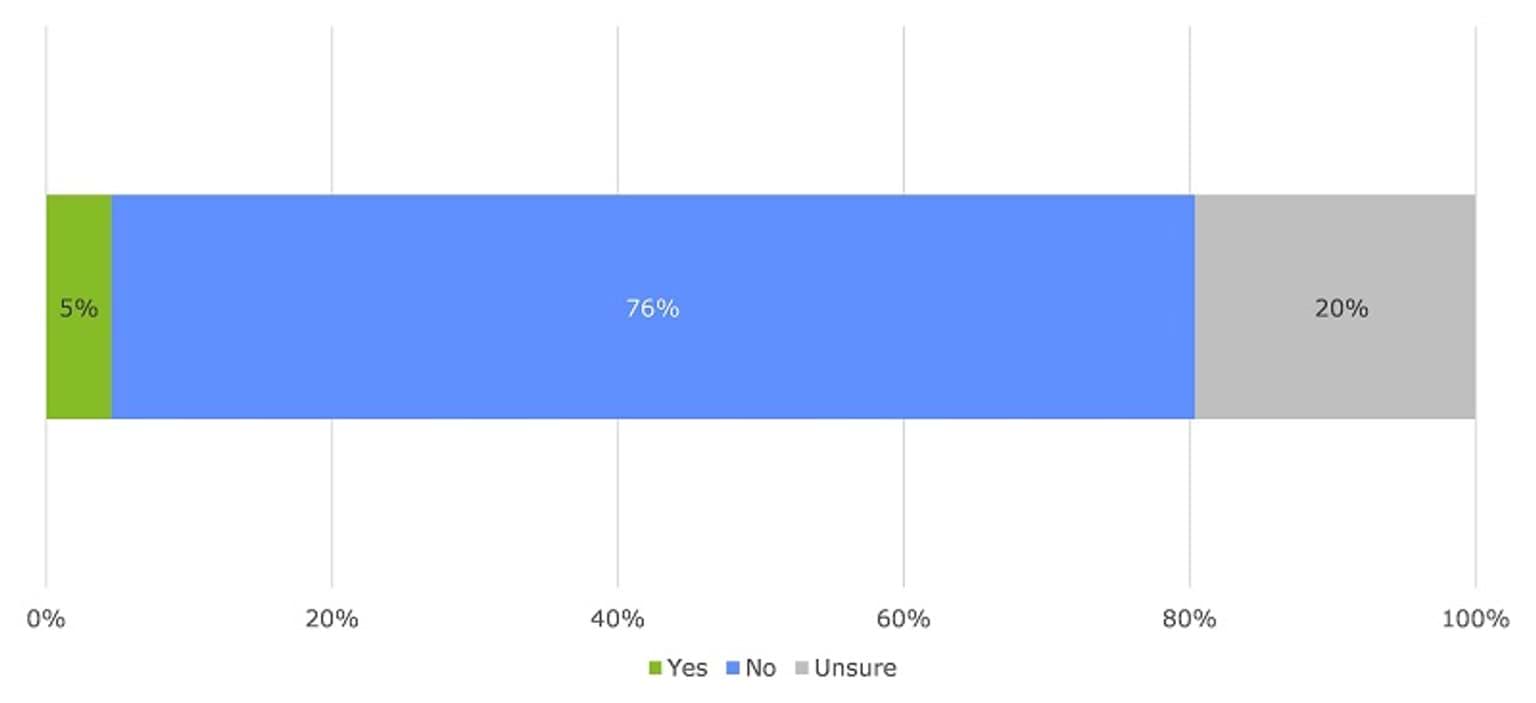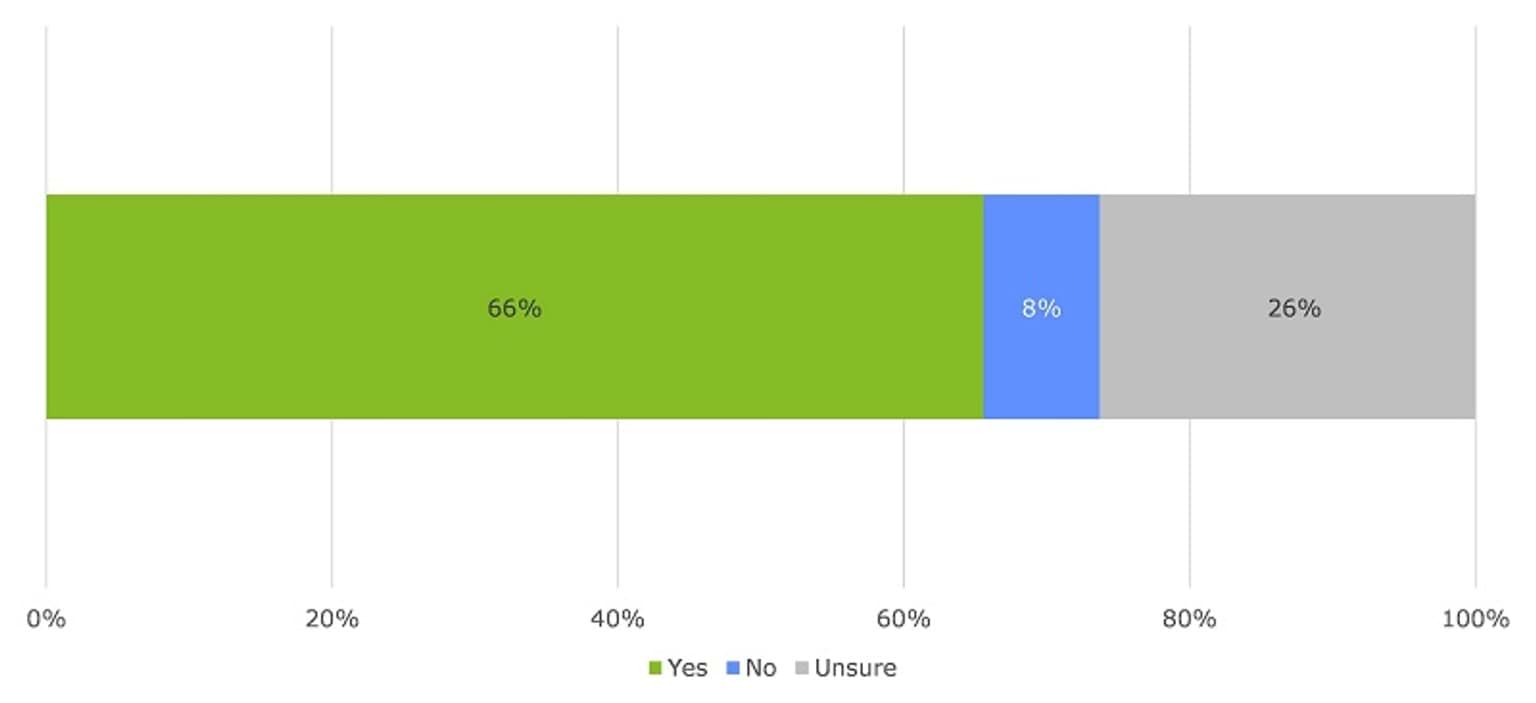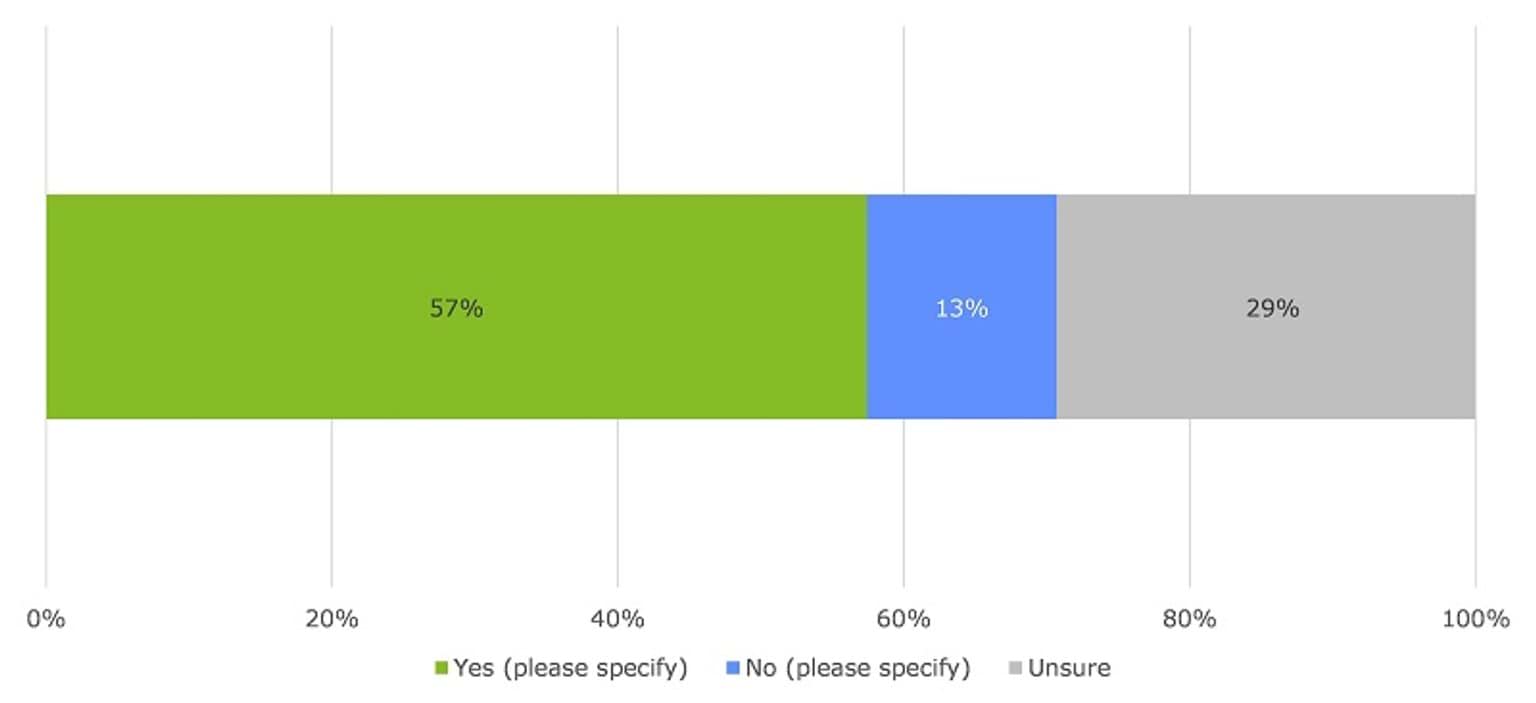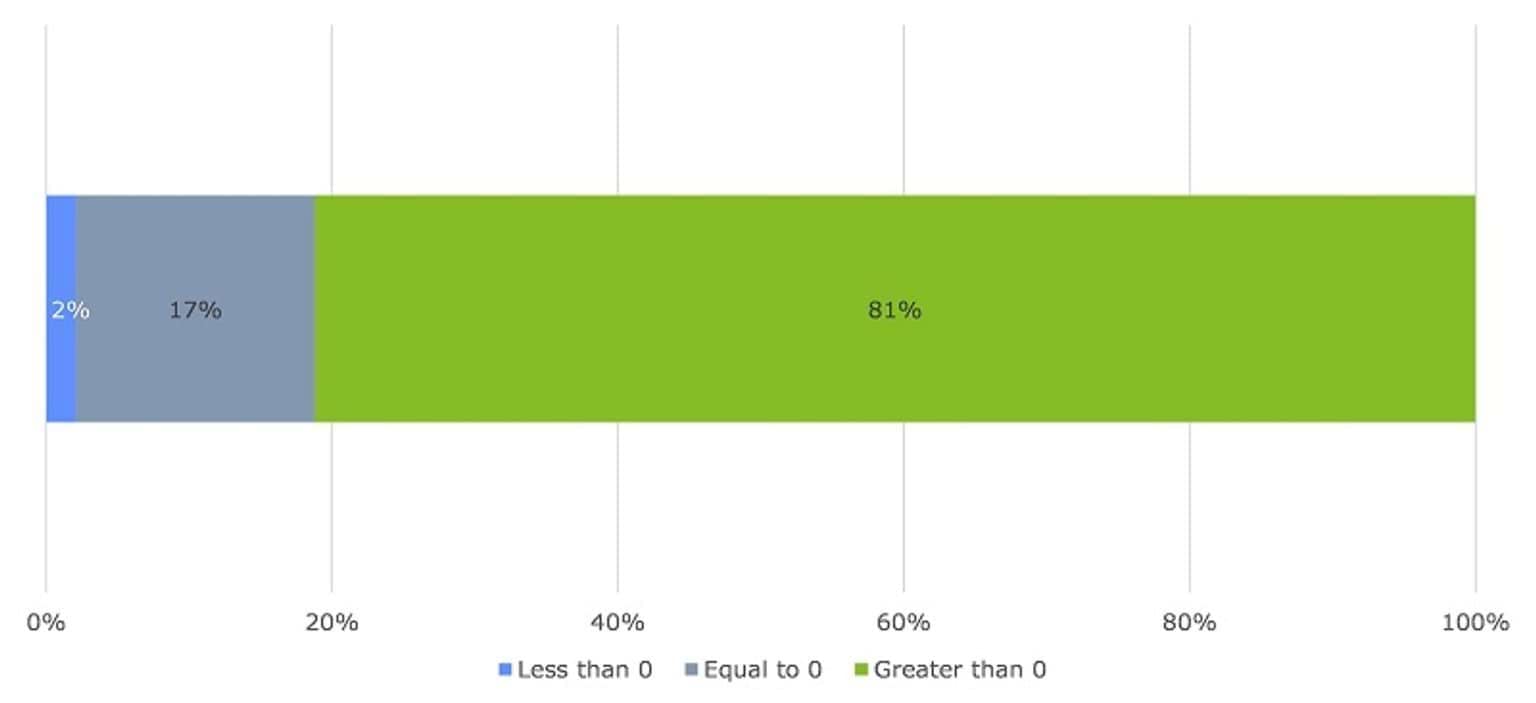C.1. Survey appendix
C.1.1. Development and distribution
This Review designed and developed an online survey. It was disseminated in multiple tranches between 7 September and 27 October 2023 to individuals who work in ISEs across workforces.
The CISS Workforce Survey was distributed directly to stakeholders in the Department and the Department of Families, Fairness and Housing using contact details provided by the Department. To increase and diversify the number of individuals responding to the survey, it was then sent to chosen ISEs using anonymous links who were tasked to then distribute the CISS Workforce Survey further amongst their workforces. The distributions through unique survey links allow for summative information like the number of recipients of the CISS Workforce Survey and number of completed surveys to be collected. This information is not available for the brokered distributions of anonymous survey links. The dissemination strategy is captured in Table C.1 and Table C.2 below.
Table C.1: Summary of direct survey disseminations
| Workforce | Dates of dissemination | Number of recipients |
|---|---|---|
| Department of Education | 7 September 2023 10 October 2023 | 975 567 Total: 1,542 |
| Department of Families, Fairness and Housing Department of Health | 11 September 2023 | 285 |
| Phase One workforces (identified by the Department) | 25 September 2023 27 September 2023 | 357 20 Total: 377 |
| Total | 2,204 |
Table C.2: Summary of survey distributions with anonymous links
| Workforce | Dates of dissemination |
|---|---|
| Department of Justice and Community Safety | 25 September 2023 |
| Victoria Police | 25 September 2023 |
| Births, Deaths and Marriages | 4 October 2023 |
| Additional Education workforces | 4 October 2023 |
| CIS Grants Program participants and peak bodies | 10 October 2023 |
| Department of Families, Fairness and Housing | 13 October 2023 |
| Department of Health | 13 October 2023 |
A total of 340 completed responses were received between the period of 7 September 2023 to 27 October 2023.
C.1.2. Survey questions and responses
C.1.2.1. Background
Introductory text (Question 1)
Five-Year legislative review of the Child Information Sharing Scheme
Why are we running this survey?
Deloitte has been engaged by the Department of Education (the Department) to conduct a five-year legislative review of the Child Information Sharing Scheme (CISS). CISS aims to promote better child wellbeing and safety outcomes by enabling specified services to share information that will:
- improve early risk identification and intervention
- change a risk averse culture in relation to information sharing
- increase collaboration and integration between child and family services
- support children's participation in services.
The purpose of this survey is to obtain your experiences and insights on how information to support the wellbeing and safety of children is being shared through CISS. Your views will help the Department understand whether CISS is operating effectively, especially for vulnerable children. Your views will also help identify areas requiring improvement to ensure CISS is fit-for-purpose over the long-term.
Is the survey confidential?
Your responses will be treated with absolute confidentiality. Results will be reported back to the Department in aggregate form and no individual will be identifiable. Please ensure not to provide any personal or identifiable information on any person, including personal information about yourself or a child.
How long will the survey take?
The survey should take approximately 20 minutes of your time. The survey will be open until 27 October.
What if I have issues accessing the survey?
Please contact the Deloitte review team at cisreformreview@deloitte.com.au with any queries.
Question 2
Please specify the name of your organisation
264 respondents provided a substantive response to this question. The names of the organisations provided broadly aligned with the proceeding questions on the sectors and activities that best reflect each respondent’s organisation.
Of those respondents, 61 nominated the Department of Education as their organisation. A further 25 responses included the word ‘school’, while ten other responses included the word ‘college’. 18 responses identified their organisation as a kindergarten, early learning centre, preschool or childcare centre.
44 respondents identified their organisation as belonging to the health sector. Of these, 33 responses included the word ‘health’, while nine included the word ‘hospital’.
27 respondents indicated that their organisation was a local government area.
Question 3
Please select the sector that best describes your organisation/service
Response options (single answer permitted):
- DFFH – Children, Youth and Families
- DFFH – Family Violence and Sexual Assault Services
- DFFH – Housing, Homelessness and Disability
- Early Childhood Education
- Education (including student health and wellbeing)
- Health
- Justice
- Other
Summary of results
91 per cent of respondents categorised their organisation or service according to one of the sectors provided in the response options.
Of all responses, the most selected sectors were Education (including student health and wellbeing) (40 per cent), Health (21 per cent) and Early Childhood Education (16 per cent).
Question 4
Please select the category that best describes the service your organisation/service provides
Display logics: display this question if the response to Q3 (‘Please select the sector that best describes your organisation/service.’) is: ‘DFFH – Children, Youth and Families’.
Response options (single answer permitted):
- Child Protection
- Community-based child and family services
- The Orange Door
- Out of home care services
- Risk Assessment and Management Panels
- Supported Playgroup
- Settlement or casework services for migrants, refugees or asylum seekers
- Refugee Minor Program
- Other (please specify)
Summary of results
26 respondents selected ‘DFFH – Children, Youth and Families’ as the sector that best describes their organisation/service. Of those respondents, 92 per cent selected one of the categories provided in the response options for Question 4.
The most selected category that best describes the respondents’ organisation/service was ‘Community-based child and family services’ (62 per cent).
Question 5
Please select the category that best describes the service your organisation/service provides
Display logics: display this question if the response to Q3 (‘Please select the sector that best describes your organisation/service.’) is: ‘DFFH – Family Violence and Sexual Assault Services’.
Response options (single answer permitted):
- Specialist family violence services
- Sexual assault services
- Sexually abusive behaviour treatment service
- The Orange Door
- Other (please specify)
Summary of results
12 respondents selected ‘DFFH – Family Violence and Sexual Assault Services’ as the sector that best describes their organisation/service. Of those respondents, 92 per cent selected one of the categories provided in the response options for Question 5.
The most selected category that best describes the respondents’ organisation/service was ‘Specialist family violence services’ (75 per cent).
Question 6
Please select the category that best describes the service your organisation/service provides
Display logics: display this question if the response to Q3 (‘Please select the sector that best describes your organisation/service.’) is: ‘DFFH – Housing, Homelessness and Disability’.
Response options (single answer permitted):
- Community Housing
- DFFH Housing
- Homelessness services
- Disability Services
- Multiple and Complex Needs Initiative
- Other (please specify)
Summary of results
Four respondents selected ‘DFFH – Housing, Homelessness and Disability’ as the sector that best describes their organisation/service.
All respondents selected ‘Homelessness services’ as the best option that best described their organisation/service.
Question 7
Please select the category that best describes the service your organisation/service provides
Display logics: display this question if the response to Q3 (‘Please select the sector that best describes your organisation/service.’) is: ‘Early Childhood Education’.
Response options (single answer permitted):
- Access to Early Learning Program
- Kindergarten Service
- Long Day Care Service
- Outside School Hours Care
- DE Quality Assessment and Regulation Division
- Other (please specify)
Summary of results
53 respondents selected ‘Early Childhood Education’ as the sector that best describes their organisation/service. Of those respondents, 81 per cent selected one of the categories provided in the response options for Question 7.
The most selected category that best describes the respondents’ organisation/service was ‘Kindergarten Service’ (47 per cent), followed by ‘Long Day Care Service’ (30 per cent).
Question 8
Please select the category that best describes the service your organisation/service provides
Display logics: display this question if the response to Q3 (‘Please select the sector that best describes your organisation/service.’) is: ‘Education (including student health and wellbeing)’.
Response options (single answer permitted):
- Catholic School
- Government School
- Independent School
- Victorian Curriculum and Assessment Authority
- Victorian Institute of Teaching
- Victorian Registration and Qualifications Authority
- Doctors in Schools Program
- DE Student Health and Wellbeing Service (e.g., Visiting Teachers, Student Support Services)
- School-Focused Youth Services
- DE Security and Emergency Management Division
- DE State-wide Vision Resource Centre
- DE Aboriginal Education and Engagement Service
- Student Reengagement Service (e.g., Navigator, LOOKOUT)
- Other (please specify)
Summary of results
136 respondents selected ‘Education (including student health and wellbeing)’ as the sector that best describes their organisation/service. Of those respondents, 90 per cent selected one of the categories provided in the response options for Question 8.
The most selected category was ‘DE Student Health and Wellbeing Service (e.g., Visiting Teachers, Student Support Services)’ (39 per cent), followed by ‘Government School’ (38 per cent).
Question 9
Please select the category that best describes the service your organisation/service provides
Display logics: display this question if the response to Q3 (‘Please select the sector that best describes your organisation/service.’) is: ‘Health’.
Response options (single answer permitted):
- Alcohol and other drug service
- Ambulance service
- Bush nursing centre
- Community health centre
- Early Parenting Centre
- General Practice
- Health and Hospital Service
- Integrated health and aged care services
- Maternal and Child Health Service
- Mental health service
- State-funded Aged Care Service
- Other (please specify)
Summary of results
71 respondents selected ‘Health’ as the sector that best describes their organisation/service. Of those respondents, 89 per cent selected one of the categories provided in the response options for Question 9.
The most selected categories that best describes the respondents’ organisation/service were ‘Health and Hospital Service’ and ‘Maternal and Child Health Service’ (both 27 per cent), followed by ‘Mental health service’ (14 per cent).
Question 10
Please select the category that best describes the service your organisation/service provides
Display logics: display this question if the response to Q3 (‘Please select the sector that best describes your organisation/service.’) is: ‘Justice’.
Response options (single answer permitted):
- Court Service
- Justice Health
- Multi-Agency Panel to Prevent Youth Offending
- Perpetrator intervention services, including trials
- Secretariat to the Youth Parole Board
- Victims Assistance
- Victoria Police
- Youth Justice
- Other (please specify)
Summary of results
9 respondents selected ‘Justice’ as the sector that best describes their organisation/service. Of those respondents, 89 per cent selected one of the categories provided in the response options for Question 10.
The most selected categories that best describes the respondents’ organisation/service were ‘Victoria Police’ and ‘Youth Justice’ (both 33 per cent).
Question 11
Please select the category that best describes the service your organisation/service provides
Display logics: display this question if the response to Q3 (‘Please select the sector that best describes your organisation/service.’) is: ‘Other’.
Response options (single answer permitted):
- Commission for Children and Young People
- Registry of Births, Deaths and Marriages
- other (please specify).
Summary of results
29 respondents selected ‘Other’ as the sector that best describes their organisation/service. Of those respondents, six per cent selected one of the categories provided in the response options for Question 11.
The most selected response to Question 11 was ‘Other (please specify)’. These respondents broadly identified their organisation provided one or multiple human services, including family violence support services and ‘community and family services’.
Question 12
How long have you been using or engaging with CISS?
Response options (single answer permitted):
- Less than 6 months
- 6 to 12 months
- 1 to 2 years
- More than 2 years
Summary of results
Most respondents indicated that they have been using or engaging with CISS for more than 12 months (79 per cent). Of all respondents, 54 per cent identified that they had been using CISS for more than 2 years.
The proportions of responses under each option incrementally increased with the incrementally longer timeframes offered in each response option.
Question 13
Is your service able to share information under CISS?
Response options (single answer permitted):
- Yes
- No
- Unsure
Summary of results
92 per cent of respondents provided a conclusive answer to this question. 89 per cent of all respondents indicated that they are able to share information under CISS. A greater proportion of respondents (8 per cent) indicated that they were unsure whether they were able to share information than those who indicated that they could not share information (3 per cent).
C.1.2.2. Understanding of the purpose of CISS
Question 14
Please describe your understanding of the purpose of CISS
Respondents indicated that the purpose of CISS included:
- sharing information to promote children’s safety
- sharing information to promote children’s wellbeing
- making services aware of issues relating to children (particularly issues relating to family violence)
- making services aware of risks relating to children
- allowing services across sectors to collaborate in support of tailoring their service provision
- allowing services across sectors to collaborate in assessing and managing risks relating to children
- encouraging smooth transitions between children’s services.
Some respondents indicated that CISS did not require the consent of the child or family to engage in information sharing activities. A relatively small proportion of responses noted that CISS was primarily implemented to address wellbeing and safety risks to children experiencing vulnerability.
Another small proportion of responses noted that CISS provided a legal framework for information sharing activities.
C.1.2.3. Training in CISS
Question 15
Please rate your agreement with the following statement: I found the training I received to use CISS useful and informative.
Display logics: display this question if the response to Q13 (‘Is your service able to share information under CISS?’) is: ‘Yes’, or ‘Unsure’.
Response options (single answer permitted):
• Strongly disagree
• Disagree
• Neither agree nor disagree
• Agree
• Strongly agree
• I did not complete the training.
Summary of results
93 per cent of respondents indicated that they had completed training on CISS. 86 per cent of all respondents provided a conclusive response to this question.
Most respondents (79 per cent) indicated that they found the training they received useful and informative (50 per cent selected ‘agree’, 29 per cent selected ‘strongly agree’). Four per cent of respondents indicated that they did not find the training they received useful and informative.
7 per cent of respondents indicated that they had not received training on CISS, while 9 per cent indicated that they neither agreed nor disagreed that they found the training useful and informative.
Question 16
Please rate your agreement with the following statement: I am confident in my understanding of CISS.
Display logics: display this question if the response to Q13 (‘Is your service able to share information under CISS?’) is: ‘Yes’, or ‘Unsure’.
Response options (single answer permitted):
- Strongly disagree
- Disagree
- Neither agree nor disagree
- Agree
- Strongly agree
Summary of results
84 per cent of respondents provided a conclusive answer to this question. Most respondents (74 per cent) indicated that they were confident in their understanding of CISS (63 per cent selected ‘agree’, 11 per cent selected ‘strongly agree’). A small proportion of respondents (eight per cent) indicated that they were not confident.
16 per cent of respondents indicated that they neither agreed nor disagreed with the statement that they were confident in their understanding of CISS.
Question 17
Please rate your agreement with the following statement: I would benefit from more training on CISS.
Display logics: display this question if:
- the response to Q13 (‘Is your service able to share information under CISS?’) is:
- ‘Yes’, or
- ‘Unsure’; and
- the response to Q16 (‘I am confident in my understanding of CISS’) is:
- ‘Neither agree nor disagree’, or
- ‘Disagree’ or
- ‘Strongly disagree’.
Response options (single answer permitted):
- Strongly disagree
- Disagree
- Neither agree nor disagree
- Agree
- Strongly agree
Summary of results
83 per cent of respondents provided a conclusive answer to this question. Most respondents (78 per cent) indicated that they would benefit from further training on CISS, while five per cent of respondents strongly disagreed that they would not benefit from further training.
17 per cent of respondents indicated that they neither agreed nor disagreed with the statement that they would benefit from further training on CISS.
Question 18
Does your organisation have policies and procedures that cover the sharing of children's information with external organisations?
Display logics: display this question if the response to Q13 (‘Is your service able to share information under CISS?’) is: ‘Yes’, or ‘Unsure’.
Response options (single answer permitted):
- Strongly disagree
- Disagree
- Neither agree nor disagree
- Agree
- Strongly agree
Summary of results:
84 per cent of respondents provided a conclusive answer to this question. 82 per cent of all respondents indicated that their organisation had policies and procedures that cover the sharing of children’s information with external organisations. Two per cent of respondents indicated their organisation did not have such policies and procedures.
16 per cent of respondents indicated that they were unsure.
C.1.2.4. Information sharing practices
Question 19
How have you shared information about children to support their wellbeing and safety through CISS?
Display logics: display this question if the response to Q13 (‘Is your service able to share information under CISS?’) is: ‘Yes’, or ‘Unsure’.
Response options (single answer permitted):
- In response to other agencies or individuals
- Proactively (sharing information with other agencies or individuals without them requesting the information)
- Both proactively and in response to other agencies or individuals
- I have not shared information
- Unsure
Summary of results
98 per cent of respondents provided a conclusive answer to this question. Of all respondents, most (77 per cent) indicated that they had shared information using CISS. Half (50 per cent) of all respondents indicated that they shared information both proactively and in response to other agencies or individuals.
Smaller proportions of respondents (27 per cent) provided answers which suggested that while information sharing was taking place, they were either entirely proactive or entirely in response to requests for information. 20 per cent of all respondents indicated that they have not shared information at all.
2 per cent of respondents were unsure if they had shared information.
Question 20
What services do you typically request information from or share information with to support child wellbeing and safety through CISS?
Display logics: display this question if the response to Q13 (‘Is your service able to share information under CISS?’) is: ‘Yes’, or ‘Unsure’.
Response options (multiple answers permitted):
- Protection services (e.g., Victoria Police, Courts, Family Violence)
- Schools
- Service providers (e.g., children and family services, health services)
- Government
- Peak bodies
- Unsure
- Other (please specify)
Summary of results
Respondents were able to provide multiple responses to this question, to allow for a fulsome picture of which services they typically engaged in information sharing activities with. Respondents were able to answer the question using the categories provided in 91 per cent of responses.
The highest proportion of responses (31 per cent) indicated that information sharing activities were conducted with protection services, followed by service providers (30 per cent) and schools (24 per cent).
Seven per cent of responses were categorised under ‘other (please specify)’. These responses indicated that they requested from, or shared information with Child Protection or the Orange Door. Two per cent of responses were categorised as ‘unsure’.
Question 21
What communication methods do you use to request or share information?
Display logics: display this question if the response to Q13 (‘Is your service able to share information under CISS?’) is: ‘Yes’, or ‘Unsure’.
Response options (multiple answers permitted):
- Telephone
- Verbally
- Other (please specify)
Summary of results
Respondents were able to provide multiple responses to this question, to allow for a fulsome picture of how they engaged in information sharing activities. Respondents were able to answer the question using the categories provided in 93 per cent of responses.
The highest proportion of responses (41 per cent) indicated that information sharing activities were conducted via email, followed by via telephone (34 per cent) and verbally (18 per cent).
52 per cent of responses indicated that information sharing activities were not conducted in writing (either via telephone or verbally).
Seven per cent of responses were categorised under ‘other (please specify)’. A significant proportion of those identified care coordination team meetings as the setting in which they request or share information.
Question 22
Have you shared or received information about children in your care to support their wellbeing and safety from other agencies or individuals in the past 12 months?
Display logics: display this question if the response to Q13 (‘Is your service able to share information under CISS?’) is: ‘Yes’, or ‘Unsure’.
Response options (single answer permitted):
- Yes
- No
- Prefer not to say
Summary of results
98 per cent of respondents provided a conclusive answer to this question. While most respondents (66 per cent) indicated that they had shared or received information, 33 per cent indicated that they had not.
Two per cent of respondents selected ‘prefer not to say’ to this question.
Question 23
How have you received information about children through CISS?
Display logics: display this question if the response to Q13 (‘Is your service able to share information under CISS?’) is: ‘Yes’, or ‘Unsure’.
Response options (single answer permitted):
- In response to other agencies or individuals
- Proactively (sharing information with other agencies or individuals without them requesting the information)
- Both proactively and in response to other agencies or individuals
- I have not
Summary of results
Most respondents (65 per cent) indicated that they had received information through CISS. 43 per cent of all respondents indicated that they received information both proactively and following a request to other agencies or individuals. Smaller proportions of respondents (22 per cent) provided answers which suggested that while ISEs were receiving information, they were received either entirely proactively or entirely in response to requests for information.
35 per cent of all respondents indicated that they have not received information at all.
Question 24
How often has your organisation refused an external request for information sharing through CISS?
Display logics: display this question if the response to Q13 (‘Is your service able to share information under CISS?’) is: ‘Yes’, or ‘Unsure’.
Response options (single answer permitted):
- All of the time
- Most of the time
- Occasionally
- Never refused a request for information
- Never received a request for information
- Other (please specify)
Summary of results
73 per cent of respondents were able to characterise their frequency of refusing external requests using the response options available. 35 per cent of respondents indicated that they had never refused a request for information, while 18 per cent indicated that they had only refused requests for information occasionally. However, 19 per cent of respondents had never received a request for information.
Of those who nominated ‘other (please specify)’ (27 per cent), a significant proportion indicated that they were unsure of how frequently requests for information were refused. This was often attributed to the size of their organisation being too large for the respondent to have visibility over the frequency of refusals.
Question 25
What were the most common reasons for refusing a request to share information?
Display logics: display this question if:
- the response to Q13 (‘Is your service able to share information under CISS?’) is:
- ‘Yes’, or
- ‘Unsure’; and
- the response to Q24 (‘How often has your organisation refused an external request for information sharing through CISS?’.) is not:
- ‘Never refused a request for information’, or
- ‘Never received a request for information’.
Response options (multiple answers permitted):
- Don’t know
- The information requested was deemed as not relevant for sharing
- The information requested could not legally be shared
- Improper process
- System not followed
- Did not have the necessary consent to share
- Privacy had to be prioritised over the wellbeing of the child
- The procedures in place were too onerous to justify the time it would take to share information
- Other concerns about privacy
- Did not have the confidence about the legal obligations in relation to privacy
- Other (please specify)
Summary of results
Respondents nominated a multitude of reasons for refusing a request to share information. Respondents who nominated ‘Other (please specify)’ (31 per cent of all responses), broadly indicated that they had refused requests in situations where they could not verify the identity of the requesting service, or that they did not work in a role which did not allow them to have visibility over common reasons for refusing a request.
The next most cited response was ‘don’t know’ (25 per cent), followed by ‘the information requested was deemed as not relevant for sharing’ (12 per cent).
C.1.2.5. Burden of ISEs’ adoption of CISS
Question 26
If you have been involved in the implementation of CISS within your service/organisation: on a scale from zero to ten where zero means "very little effort" and ten means "a very high level of effort", overall, how much effort has been required of your organisation to engage with/use CISS?
Display logics: display this question if the response to Q13 (‘Is your service able to share information under CISS?’) is: ‘Yes’, or ‘Unsure’.
Skip logic: skip to end of ‘Burden of ISEs’ adoption of CISS’ question block if the response to Q26 is: ‘I have not been involved in the CISS implementation’.
Response options (single answer permitted):
- Numbers zero to ten (inclusive)
- I have not been involved in CISS implementation
Summary of results
191 respondents indicated that they had been involved in the implementation of CISS in their organisation. Of those, 42 per cent indicated that the level of effort required to implement CISS was either a seven or eight on a scale to ten. The mean response was 6.67 out of ten. Chart C.22 provides the distribution of responses, while Chart C.23 provides the distribution of responses according to whether the response was less than, equal to or greater than five out of ten.
Question 27
Has this changed since you implemented CISS?
Display logics: display this question if the response to Q13 (‘Is your service able to share information under CISS?’) is: ‘Yes’, or ‘Unsure’.
Response options (single answer permitted):
- Yes – the current level of effort has increased since CISS was first implemented
- Yes – the current level of effort has decreased since CISS was first implemented
- No – the level of effort has stayed the same
- Unsure
Summary of results
87 per cent of respondents provided a conclusive answer to this question. Of all respondents, 42 per cent indicated that the level of effort required to engage with CISS has not changed since CISS was implemented. 26 per cent indicated that the level of effort had increased, while 19 per cent indicated that the level of effort had decreased.
13 per cent of respondents selected ‘unsure’ to this question.
Question 28
Please describe any enablers to using CISS.
Display logics: display this question if the response to Q13 (‘Is your service able to share information under CISS?’) is: ‘Yes’, or ‘Unsure’.
Identified enablers to using CISS included:
- a shared sense of goodwill and belief in supporting the wellbeing and safety of children
- a shared and correct understanding across services of how to use CISS
- appropriate training materials on CISS
- clear guidance materials on the appropriate use of CISS
- pre-existing relationships with other services.
25 per cent of respondents indicated that they either could not disclose any enablers to using CISS or were not using CISS at all.
Question 29
Please describe any barriers to using CISS.
Display logics: display this question if the response to Q13 (‘Is your service able to share information under CISS?’) is: ‘Yes’, or ‘Unsure’.
Identified barriers to using CISS included:
- a lack of awareness of CISS among services
- a lack of training on CISS
- that the training undertaken was not adequately clear
- that the training undertaken was not remembered such that refresher training was required.
These were identified as prominent barriers to services having the requisite knowledge to appropriately use CISS
Identified barriers to using CISS among existing users included:
- the time required to undertake information sharing activities according to the requirements of CISS
- that some services were slow in engaging with information sharing activities.
23 per cent of respondents indicated that they either could not disclose any barriers to using CISS or were not using CISS at all.
C.1.2.6. Understanding of CISS’ legal and regulatory settings
Question 30
To what extent do you agree with the following statements?
Display logics: display this question if the response to Q13 (‘Is your service able to share information under CISS?’) is: ‘Yes’, or ‘Unsure’.
Response options (single answer permitted):
- Strongly disagree
- Disagree
- Neither agree nor disagree
- Agree
- Strongly agree
30.1: Generally, staff at my organisation are open to sharing information with other agencies within the existing legal frameworks of CISS.
Summary of results
88 per cent of respondents provided a conclusive answer to this question. Of all respondents, most (82 per cent) indicated that they thought staff at their organisation were open to sharing information with other agencies within the existing legal frameworks (56 per cent selected ‘agree’, 26 per cent selected ‘strongly agree’). Six per cent of respondents disagreed with this statement.
12 per cent selected ‘neither agree nor disagree’ to this question.
30.2: Generally, staff at my organisation are aware of their legal responsibilities when sharing information through CISS.
Summary of results
81 per cent of respondents provided a conclusive answer to this question. Of all respondents, 72 per cent indicated that they thought staff at their organisation were aware of their legal responsibilities when sharing information through CISS (56 per cent selected ‘agree’, 16 per cent selected ‘strongly agree’). Eight per cent of respondents disagreed with this statement.
19 per cent selected ‘neither agree nor disagree’ to this question.
30.3: Generally, staff at my organisation know where to go for guidance on how to share information through CISS.
Summary of results
79 per cent of respondents provided a conclusive answer to this question. Of all respondents, 67 per cent indicated that they thought staff at their organisation were aware of where to go for guidance on how to share information through CISS (51 per cent selected ‘agree’, 16 per cent selected ‘strongly agree’). 11 per cent of respondents indicated that they disagreed with the statement in the question (nine per cent selected ‘disagree’, two per cent selected ‘strongly disagree’).
21 per cent of respondents selected ‘neither agree nor disagree’ to this question.
30.4: Generally, staff at my organisation understand how information sharing through CISS could benefit children.
Summary of results
90 per cent of respondents provided a conclusive answer to this question. Of all respondents, 86 per cent indicated that they thought staff at their organisation understood how information sharing through CISS could benefit children (53 per cent selected ‘agree’, 33 per cent selected ‘strongly agree’). Four per cent of respondents indicated that they did not agree with the statement in the question.
Ten per cent of respondents selected ‘neither agree nor disagree’ to this question.
30.5: Generally, staff at my organisation are reluctant to share information through CISS in the fear they may be doing the wrong thing.
Summary of results
69 per cent of respondents provided a conclusive answer to this question. Almost half of all respondents (49 per cent) indicated that they thought staff at their organisation were not reluctant to share information through CISS in the fear they may be doing the wrong thing (36 per cent selected ‘disagree’, 13 per cent selected ‘strongly disagree’).
19 per cent of respondents indicated that staff at their organisation were reluctant to share information through CISS in the fear they may be doing the wrong thing (16 per cent selected ‘agree’, three per cent selected ‘strongly agree’).
31 per cent of respondents selected ‘neither agree nor disagree’. This was the second-most common response.
30.6: Generally, staff at my organisation promote information sharing to others, where it may be of benefit within the existing legal frameworks.
Summary of results
71 per cent of respondents provided a conclusive answer to this question. Most respondents (63 per cent) indicated that they thought staff at their organisation promoted information sharing to others, where it may be of benefit within the existing legal frameworks (50 per cent selected ‘agree’, 13 per cent selected ‘strongly agree’). A small proportion (eight per cent) disagreed with this statement.
29 per cent of respondents selected ‘neither agree nor disagree’. This was the second-most common response.
Question 31
As far as you are aware, do your current information sharing practices align with the requirements under CISS?
Display logics: display this question if the response to Q13 (‘Is your service able to share information under CISS?’) is: ‘Yes’, or ‘Unsure’.
Summary of results
84 per cent of respondents provided a conclusive answer to this question. Of all respondents, 82 per cent indicated that their information sharing practices align with the requirements under CISS. Two per cent of respondents indicated that their practices did not align with the requirements.
16 per cent indicated that they were unsure whether their information sharing practices aligned with the requirements under CISS.
C.1.2.7. Effectiveness: impacts of CISS
Question 32
To what extent do you agree with the following statements?
Display logics: display this question if the response to Q13 (‘Is your service able to share information under CISS?’) is: ‘Yes’, or ‘Unsure’.
Response options (single answer permitted):
- Strongly disagree
- Disagree
- Neither agree nor disagree
- Agree
- Strongly agree
32.1: Through my organisation's use of CISS, there is an improved ability to promote child wellbeing and safety.
Summary of results
79 per cent of respondents provided a conclusive response to this question. 75 per cent of all respondents indicated that their organisation’s use of CISS had improved their ability to promote child wellbeing and safety (50 per cent selected ‘agree’, 25 per cent selected ‘strongly agree’). Four per cent disagreed with the statement in the question.
21 per cent of respondents neither agreed nor disagreed with the statement in the question.
32.2: Through my organisation's use of CISS, there is an improved ability to identify risks to children early.
Summary of results
77 per cent of respondents provided a conclusive response to this question. 73 per cent of all respondents indicated that their organisation’s use of CISS had improved their ability to identify risks to children early (49 per cent selected ‘agree’, 24 per cent selected ‘strongly agree’). Five per cent of respondents disagreed with the statement in the question.
23 per cent of respondents selected ‘neither agree nor disagree’.
32.3: Through my organisation's use of CISS, there is more communication and collaboration between service providers.
Summary of results
73 per cent of respondents provided a conclusive response to this question. 64 per cent of all respondents indicated that their organisation’s use of CISS had increased communication and collaboration between service providers (47 per cent selected ‘agree’, 17 per cent selected ‘strongly agree’). Nine per cent of respondents disagreed with the statement in the question.
27 per cent of respondents neither agreed nor disagreed with the statement in the question. This was the second-most common response.
32.4: Through CISS, there are more ways to share information with other service providers.
76 per cent of respondents provided a conclusive response to this question. 72 per cent of all respondents indicated that their organisation’s use of CISS had increased the ways to share information with other service providers (53 per cent selected ‘agree’, 19 per cent selected ‘strongly agree’). Four per cent of respondents disagreed with the statement in the question.
24 per cent of respondents neither agreed nor disagreed with the statement in the question. This was the second-most common response.
32.5: I understand when I can share information about children for their wellbeing and safety through CISS.
88 per cent of respondents provided a conclusive response to this question. 84 per cent of all respondents indicated that they knew when they could share information about children for their wellbeing and safety through CISS (53 per cent selected ‘agree’, 31 per cent selected ‘strongly agree’). Four per cent of respondents disagreed with the statement in the question.
12 per cent of respondents neither agreed nor disagreed with the statement in the question.
Question 33
To what extent do you feel more confident sharing information about children now compared with before CISS was introduced?
Display logics: display this question if:
- the response to Q12 (‘How long have you been using or engaging with CISS?’) is:
- ‘Less than 6 months’, or
- ‘6 to 12 months’, or
- ‘1 to 2 years’; and
- the response to Q13 (‘Is your service able to share information under CISS?’) is:
- ‘Yes’, or
- ‘Unsure’
Response options (single answer permitted):
- Much less comfortable
- Less comfortable
- No change
- More comfortable
- Much more comfortable
- Unsure
Summary of results
93 per cent of respondents provided a conclusive answer to this question. 71 per cent of all respondents indicated that they were more confident sharing information about children now compared with before CISS was introduced (43 per cent selected ‘agree’, 28 per cent selected ‘strongly agree’). Four per cent of respondents indicated that they were less confident. 18 per cent indicated that they had not experienced a change in their comfort in sharing information about children.
7 per cent of respondents were unsure of whether their comfort in sharing information about children had changed.
Question 34
In your experience of using CISS, have you witnessed a negative impact on a vulnerable or disadvantaged person resulting from information sharing?
Display logics: display this question if the response to Q13 (‘Is your service able to share information under CISS?’) is: ‘Yes’, or ‘Unsure’.
Response options (single answer permitted):
- Yes
- No
- Unsure
Summary of results
80 per cent of respondents provided a conclusive answer to the question. 76 per cent of respondents indicated that they had not witnessed a negative impact on a person experiencing vulnerability or disadvantage resulting from information sharing. Five per cent of respondents indicated that they had.
20 per cent of respondents were unsure as to whether they had witnessed a negative impact on a person experiencing vulnerability or disadvantage resulting from information sharing.
Question 35
Has using CISS made it easier for you to share and access information about children's wellbeing and safety?
Display logics: display this question if the response to Q13 (‘Is your service able to share information under CISS?’) is: ‘Yes’, or ‘Unsure’.
Response options (single answer permitted):
- Yes
- No
- Unsure
Summary of results
74 per cent of respondents provided a conclusive answer to this question. 66 per cent of all respondents indicated that CISS had made it easier for them to share and access information about children’s wellbeing and safety. Eight per cent of respondents indicated that CISS had not made it easier to share and access information.
26 per cent of respondents indicated that they were unsure of whether CISS had made sharing and accessing information easier.
Question 36
Do you think that CISS has allowed for better support to be delivered to the children in your care (or in your service)? How so?
Display logics: display this question if the response to Q13 (‘Is your service able to share information under CISS?’) is: ‘Yes’, or ‘Unsure’.
Response options (single answer permitted):
- Yes (please specify)
- No (please specify)
- Unsure
Summary of results
70 per cent of respondents provided a conclusive answer to this question. 57 per cent of respondents indicated that CISS had allowed for better support to be delivered to children in their care. Qualitative responses from these respondents broadly suggested that CISS provided them with the mechanism for receiving the information they needed to understand the circumstances surrounding a child, which enabled them to collaborate with other services to develop plans for more tailored service delivery for children.
13 per cent of respondents indicated that CISS had not allowed for better support delivery. Qualitative responses from these respondents suggested that information sharing practices that informed their service delivery either would have taken place irrespective of CISS, or were not common enough to conclude that CISS had allowed for better support to be delivered to children.
29 per cent of respondents indicated that they were unsure of whether CISS had allowed for better support to be delivered to the children in their care.
C.1.2.8. Impacts of CISS
Question 37
Please describe any impacts you have observed of CISS on children.
51 per cent of respondents were able to describe impacts of CISS that they had observed on children.
Responses which described positive impacts on children included:
- better wellbeing and safety outcomes for children
- greater comfort among children that they are being heard
- greater comfort among children that services are able to provide them supports
- earlier interventions through CISS enabled more robust service supports teams for children
- reduced incidence of child re-traumatisation through re-telling their story to multiple services
- faster response times for children experiencing crises situations.
While there were few responses which described negative impacts, many responses alluded to it being difficult to determine what impacts on children are attributable to CISS. Consequently, 49 per cent of respondents were unable to describe any such impacts.
Question 38
The below scale is from negative five to positive five, where negative five means 'very negative impact', positive five means 'very positive impact' and zero means 'no impact'. What impact has sharing information through CISS had on child wellbeing and safety?
Response options (single answer permitted):
- Numbers negative five to positive five (inclusive)
Summary of results
Respondents broadly indicated that sharing information through CISS had had a positive impact on child wellbeing and safety. The most common response (26 per cent) was positive three and the mean response was positive 2.54.
Chart C.41 provides the distribution of responses, and Chart C.42 provides the distribution of responses according to whether the response was less than, equal to or greater than zero.
Question 39
You may provide an explanation for your answer to the previous question if you wish.
31 per cent of respondents provided an explanation for their answer to Question 38.
While a significant proportion of responses suggested that they could not readily see how CISS would adversely impact children, they also noted that they were not able to confidently say that CISS specifically had had positive impacts on children. Some responses also noted that some information sharing activities that are now captured under CISS were taking place before CISS was implemented, which reduced the extent to which they could identify CISS having a positive impact.
Other responses noted that the extent of CISS’ positive impact on children largely varied with how ISEs used CISS, such that nominating a numeric value to reflect its positive impact was difficult.
Question 40
Do you have any suggestions to improve CISS?
57 per cent of respondents indicated that they had substantive suggestions to improve CISS.
Common themes among responses included:
- further workforce-specific training (including refresher training), particularly regarding ISEs’ legal responsibilities and obligations under CISS
- a single standard-form template document for conducting information sharing activities
- suggestions to simplify guidance material
- further alignment of information sharing practices across ISEs.
Concluding text (Question 41)
This is the end of the survey. Please click the forward arrow to submit your responses.
Updated
